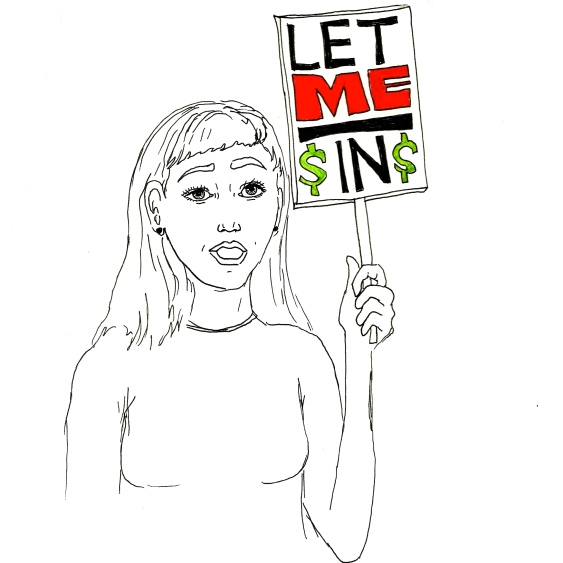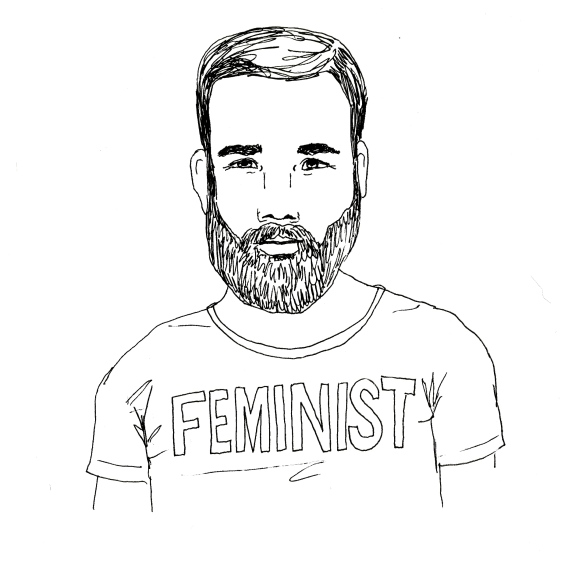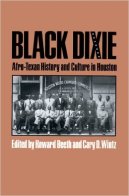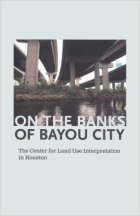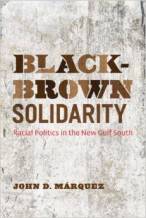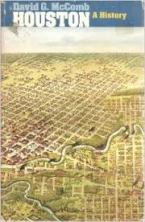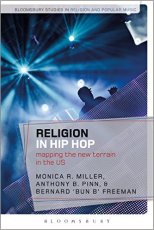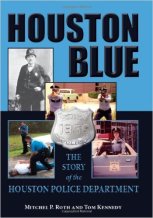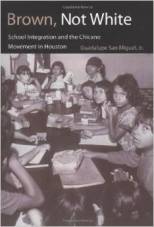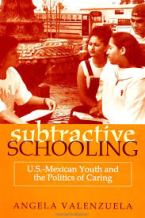Author: Jenna Christian
Geopolitical youth: Research on JROTC and military enlistment in Houston
T.E.J.A.S. Toxic Tour of Houston’s East End


#WhatHappenedtoSandraBland
December 2014: Black Lives Matter at the Houston Galleria Mall




Jan 23, 2017: Post-Election Actions
After seeing so many pictures this weekend from the Women’s March, I’m glad to now see so many articles and friends posting information about actions you can take TODAY–as well as advice on getting organized to keep this work going once. I decided to compile the things that are appearing in my feed. I’m working my way down the list myself.
Some of these require you to sign up for email notifications. I get that people hate mass emails filling your inbox, but sometimes they’re actually useful. Read them.
Actions to get yourself organized:
- Sign up for email notifications of new legislations in Congress. Go to congress.gov. Scroll to the bottom footer, and under “Ways to connect”, select “RSS & Email Alerts.” You’ll have to create an account, but you can then select to get notifications of bills in Senate and House, or to follow the actions of particular legislators (you might consider getting notifications about the votes of your own reps). [Time: 10 minutes]
- Find out who your STATE legislators are (the people in your state capitol): Visit http://openstates.org. Enter your address. See who your legislators are. Click on them. Copy down the address and phone numbers. Print them and hang them on your refrigerator or save them in your phone. Use often. [Time: 5 minutes]
- Find out who your representatives are in the US House of Representatives: http://www.house.gov/representatives/find/ Copy down the address and phone numbers. Print them and hang them on your refrigerator or save them in your phone. Use often. [Time: 2 minutes]
- Find out who your representatives are in the US Senate: https://www.senate.gov/senators/contact/ Copy down the address and phone numbers. Print them and hang them on your refrigerator or save them in your phone. Use often. [Time: 2 minutes]
- Sign up for Call Them In: This website will send you email reminders with tailored call scripts to speak to elected officials on specific legislation. http://www.callthemin.com/ [Time: 1 minute]
- Subscribe to wall-of-us.org: The website has 4 weekly acts of resistance that are useful. For example, Jan 24th there is a day of action on resisting the cabinet picks. If you’re looking for an action to do on a particular day, this is a good place. [Time: 1 minute]
- Sign up for email/text alerts from the Movement for Black Lives to receive notifications about actions near you and ways to get involved: https://m4bl.net/ [Time: 1 minute]
Immediate actions (some are Houston specific, others aren’t):
1. Respond to Paul Ryan’s Phone Poll about the Affordable Care Act: He’s hoping to hear overwhelming opposition to the ACA. Call (202) 225-0600. You’ll hear a recorded voice describe a few different issues that you might share you’re opinion on. Press two to voice your opinion on Obama’s health care plan. You’ll then hear the voice describing Paul Ryan’s plan to cut the ACA. Press 1 to support the continuation of the ACA. [Time: 2 minutes]
2. Demand that your elected officials protect DACA: “Call your congresspeople (http://www.house.gov/representatives/find/and http://www.senate.gov/…/contact…/senators_cfm.cfm…), call the White House (202-456-1414), call everyone you can think of, and say: “I am calling to demand that the President protect DACA and immigrant families. DACA has helped the lives of nearly 1 million immigrant youth who contribute to their families, communities, and our economy, and it should not be touched. The President must not sign any executive order that hurts Dreamers or immigrants more generally, who are the heart and soul of our country.” [Time: 15 + minutes–the more you call the better]
3. If you’re in Houston, call the Sheriff and Mayor TODAY about ending 287g: “URGENT MESSAGE: HOUSTON Friends, tomorrow/today (MONDAY) is looking very not good for immigrants across the country. I’m asking for your help to SHARE this message far & wide; and to call Sheriff Ed Gonzalez (713-755-3647 or 713-755-6044) & Mayor Turner (832-393-0800) as early as 8am — 1-10 times. Trump seems to be making his shit moves (as early as 9:30AM TODAY) and there’s no more time to waste. PLEASE HELP. #HTownIsHome#HereToStay” [Time: 15 + minutes–the more you call the better]

4. Submit a public comment on Standing Rock to those preparing the Environmental Impact Statement on the Dakota Access Pipeline: Follow this link: https://sierra.secure.force.com/actions/National?actionId=AR0066309&id=70131000001Do2iAAC&ddi=N17ASAFB09&utm_medium=cpc&utm_source=facebook&utm_campaign=emacq&utm_content=nodapl_comment_v2. Fill in your info. Personalize the message if you can. You’ll be added to a Sierra Club email list, but you can remove yourself after. [Time: 3 minutes]
5. Keep checking back on the Women’s March List of 10 actions to take after the march: Go to https://www.womensmarch.com/100. The first action is easy: print a postcard and write to your senator. I’m sure you could just write a regular letter/postcard too, minus the Women’s March template stuff. [Time: 15-30 minutes]
6. If you’re white and aren’t already doing this, take some time today to learn about the problems with the Women’s March: Read articles about the experiences and feelings of Black, Brown, and other people of color about the Women’s March—not to mention transgender women. (Be wary of rallying calls and protest signs that essentialize womanhood in ways that exclude transgender women). Hopefully we agree the March was not enough—we’re going to have to do some much more difficult work than showing up at a rally. Time for us white people to deal with our shit and do this work better. Here are some articles about this that crossed my feed today [Time: just keep doing this all the time]:
http://www.joojooazad.com/2017/01/keep-your-american-flags-off-my-hijab.html
https://www.good.is/articles/seeking-solidarity-at-the-womens-march-in-washington
7. If you’re in Houston, consider attending and speaking at the City Council’s Public Comment Session: They are usually held at 1:30pm on weekdays. This would be a good place to voice opinions on 287g. There are more details about dates, times, and how to sign up to speak here: https://www.facebook.com/events/227047381085173/ [Time: Plan a few hours, I believe]
8. Sign another petition to the whitehouse.gov to release Trumps taxes: https://petitions.whitehouse.gov/petition/immediately-release-donald-trumps-full-tax-returns-all-information-needed-verify-emoluments-clause-compliance [Time: 2 minutes]
Feminist Discussion Post 2: The Wage Gap, Intersectionality, and the White Privilege of Liberal Feminism
(This post is the second in a discussion between Lauren Southern and I about feminism. The discussion emerged after Lauren posted a video about why she is not a feminist, to which I wrote an open letter to Lauren in response. Lauren and I then agreed to take part in the call-and-response style discussion, in which we post questions/prompts for one another to reply to. Lauren is posting her replies as videos on youtube, while mine are hosted here on this blog. Follow the links below for a complete history of the discussion, particularly #3, which describes in greater detail the format for this conversation and some of my thoughts about it.
Conversation history
- Lauren’s original video “Why I’m not a Feminist”
- My response “A reply to Lauren Southern’s “Why I’m not a Feminist””
- Announcement about the virtual discussion
- My first prompt for Lauren “Feminism, the devaluation of the feminine, and men”
- Lauren’s first post to me “Feminism Discussion Part 1”)
Hi Lauren,
Thanks for your response to my first post. (I’m embedding the video of your first reply below so others can view it in the context of this discussion). Sorry it has taken me a few days to reply.
So, before I move to addressing your prompt for me regarding the wage gap, I want to follow up on some of the points you raised in your video reply to my prompt. I think some of the points I was trying to communicate in my prompt for you were either insufficiently explained by me or misunderstood by you, and I just want to be sure we are on the same page about what I’m actually asserting with regard to feminism before we move forward. I’ll just bullet out the key points. For those that want to skip ahead to the discussion of the wage gap, intersectionality, and white privilege in liberal feminism, I’ve delineated where I start talking about that.
RESPONSE PART 1: Clarification of last post
- Are all of women’s issues taken care of? Early in your most recent video, you say that past feminist waves have already addressed all the issues in women’s lives. Frankly, this is really troubling if you in fact believe it. I’m not sure you do believe it though, since later in your reply you refer to women’s problems when you suggest women could address their issues by acting more masculine (I’ll address that a little later), and at the end of the video you refer abstractly to “the real problems both genders have.” I’m going to give you the benefit of the doubt, therefore, and assume that you do believe women still face unique inequalities and problems in their lives (particularly, if you think about women’s experiences intersectionally and transnationally). However, if I’m wrong and you do believe that all issues facing women have been addressed (and thus you presumably believe that men are the only ones facing gendered issues), perhaps we can discuss that in the next round.
- Did I say all men need to be more feminine? You seem to have taken from my last post that my goal is to make men more feminine. This is not what I argued. What I was saying is that the devaluation of things that are deemed feminine (e.g. emotions) hurts
 both men and women. Even in your original video, you argue that men are hurt when they are ridiculed for not being “manly enough”, and the examples you cited for things that put men in harms way are deeply linked to gendered norms of acceptable masculinity. Rigid expectations about gendered behavior foreclose options, and in some cases they help produce male injury and death (for example, in relation to male suicide, where expressing and seeking help for emotional distress is often seen as shameful and feminine). Thus, the goal is not to say that men need to be more feminine, but rather to say that men (and women) should be not have to embody rigidly defined norms of masculinity in order to be deemed intelligent, worthy, productive, strong, or so on. It should be socially acceptable (even healthy) for men and women to embody a whole range of behaviors and characteristics. For men, this includes those deemed feminine, like being nurturing or expressing emotion. You say, “Feminism’s goal is not to fight for equal rights between men and women, but instead to make men more feminine.” Feminism is about equal rights between men and women. It is also about the equal valuation of femininities and masculinities (there are certainly multiple forms of both), and the freedom for both men and women to embody these in ways that they feel comfortable with.
both men and women. Even in your original video, you argue that men are hurt when they are ridiculed for not being “manly enough”, and the examples you cited for things that put men in harms way are deeply linked to gendered norms of acceptable masculinity. Rigid expectations about gendered behavior foreclose options, and in some cases they help produce male injury and death (for example, in relation to male suicide, where expressing and seeking help for emotional distress is often seen as shameful and feminine). Thus, the goal is not to say that men need to be more feminine, but rather to say that men (and women) should be not have to embody rigidly defined norms of masculinity in order to be deemed intelligent, worthy, productive, strong, or so on. It should be socially acceptable (even healthy) for men and women to embody a whole range of behaviors and characteristics. For men, this includes those deemed feminine, like being nurturing or expressing emotion. You say, “Feminism’s goal is not to fight for equal rights between men and women, but instead to make men more feminine.” Feminism is about equal rights between men and women. It is also about the equal valuation of femininities and masculinities (there are certainly multiple forms of both), and the freedom for both men and women to embody these in ways that they feel comfortable with.
- Is gender natural? This is a place where we clearly disagree. You argue that it is an “obvious fact” that men are naturally/biologically more aggressive, competitive, visual-spatial, sexual and driven. This is by no means an “obvious fact”, however, nor is it “lazy” or “pseudo intellectual” (as you say) to discuss the ways that gender is learned. That’s actually a pretty dismissive and insulting treatment of an incredibly large body of work by generations scholars and researchers. There has been a lot of work (by feminists and non-feminists alike) that debunk the assertion that gender is essential and determined by biology. Yes, we have material bodies, but they do not determine who we are, how we behave, or how we identify ourselves. Thus, the meaning we make of bodies and how we are taught (and decide) to use our bodies is deeply social. Just look take a stroll down the children’s toy aisle, and you will witness the early reproduction of gender norms. Boy’s toys encourage action, creative building, strength, and aggression, while girls toys teach beauty, the importance of male attention and protection, and how to perform domestic responsibilities like childcare, cooking, cleaning, and decorating. These lessons extend well beyond the toy aisle though, and we learn, interpret, and perform our gender in relation to norms taught in our homes, schools, media, and everyday interactions. Moreover, your argument that men are naturally aggressive, competitive, and sexual (in contrast to women) actually helps to produce the very narratives that you yourself are trying to challenge–for example, the problematic narrative that men are natural aggressors (not victims). These narratives have also helped to make certain violences like rape seem natural, as people assert that “boys will be boys” and “they just can’t help themselves, it’s in their nature.” Finally, your assertion of the biological essentialism of these gendered behaviors undermines your own argument that women could achieve success by just acting more masculine. When you say women can learn to be more masculine, you too are acknowledging that much of these supposedly natural behaviors are social, learned, and thus alterable.
- Proof that feminists speak on men’s issues? You say that I provide no proof that feminists speak for men’s issues. This is a bit confusing, since my last two posts have been filled with citations of feminists speaking on men’s issues.
- Do the top issues for feminist in 2015 pertain only to women? This is something you claim in your video, and you offer two sources (1 and 2) to support your claim. While I don’t think that feminist issues can be reduced to these lists given the breadth and diversity of the field, the fact is, when you examine these links there are actually plenty of issues that speak to men. In the first article, you see Janet Monk calling for coalitions with other racial justice and LGBT movements, which include men of color, and gay, bisexual, and transgender men. Lux Alptram similarly calls for the inclusion of gender non-conforming people and people of color, which will include men. Ai-jen calls for a livable wage and quality care for working families, which again would include men. Elizabeth Nyamayaro calls for solidarity between men and women, creating “a shared vision of gender equality that benefits all of humanity.” Jessica Pierce, Charlene Carruthers, Patrisse Cullors, Opal Tometi, and Mikki Kendall all call for a focus on police violence against black people–a movement that has gained particular momentum recently in response to state violence against black men (although women do face much police violence too). Tometi’s call also includes detention and deportation issues, which affect men. Lindy West and Alexandra Brodsky call to protect victims of assault, and both are gender neutral in their call. And, Mia McKenzie points to issues of queer and trans people of color–again she does not limit this to women (and the website she curates regularly includes articles by men and about men’s experiences). The second article you cite also includes family leave and paternal leave policies that pertain to men, although I have to say I see a lot of this second article as indicative of some of the problems with liberal feminism that I will describe in the discussion about the wage gap. Stay tuned for that though.
- Are most feminists really misandrists who want men to die? Do I represent the fringe? According to you most feminists are misandrists who want men to die, and in contrast, my (non-man-hating) approach to men is representative of the fringe of feminism. I’m really do not understand where you’re getting this from. I have been studying feminist theory and been engaged in discussions with feminist scholars and activists for years, and I have never once met or read a single feminist who said they wanted men to die. Not one. I also haven’t heard feminist “rage” about women wanting to walk around naked either, yet you claim these are the “most active and vocal” feminists. In contrast, you say that the feminism I subscribe to “is not widely practiced” and is a “fringe version”. What do you base this on? I could literally cite hundreds and hundreds of feminists both inside and outside of the academy that describe feminism in relatively similar ways as I have, but I cannot cite a single feminist who wants men to die or who is deeply invested in women being able to walk around naked.
- I’m sorry you’ve been jeered and ridiculed in replies to your video. Trust me, I’ve gotten the same, as I’m sure you know if you’ve read comments on my blog (or even those comments directed to me on your video). I’m not complaining too much. What I’ve gotten is nothing compared to other feminist bloggers, who receive a daily barrage of people saying they should die, that they deserve to be raped, or other cruel and violent things. People on the internet can be truly awful to one another. Now, that being said, one of your complaints was that feminists said your original video was anti-feminist and anti-equality. I have to say, I do think the characterization of your video as anti-feminist is arguably pretty fair. You have been vocal in your distaste for and dismissal of feminism. On the matter of equality, I do actually believe that you desire and believe in equality, but I have deep reservations and concerns about the anti-equality outcomes that emerge through some of your positions. My guess is that you would probably say the same about me on the topic of equality. By now, it seems clear we have different ideas about what equality looks like and how it is made, which is perhaps something we could talk about.
———————
RESPONSE PART 2: Reply to your question about the wage gap
Alright, now onto your question. Again, it’s easiest for me to organize my reply as a list, so here goes.
1. You say the wage gap is a “feminist myth”.
It is not only feminists who document and analyze the wage gap, and it cannot be simplified to an issue invented by feminists. In fact, a review of just some of the most recent literature on the matter reveals an overwhelming consensus on the existence of a gendered wage gap (AAUW 2015; Aizer 2010; Alon and Haberfeld 2007; Bastos et al 2009; Briggs 2011; Broyles and Fenner 2010; Budig and England 2001; Campbell and Pearlman 2013; Carrillo Hemmeter 2008; Cech 2013; Cho 2007; Christofides et al 2013; Daczo 2012; Daly et al 2006; Day 2012; Diaz and Sanchez 2013; Douglas and Steinberger 2015; Dozier 2010; Elmelech and Lu 2004; Fisher and Houseworth 2012; Flippen 2014; Franks 2007; Glauber 2008; Hirsch 2008; Hoyos et al 2012; Ioakimidis 2012; Kassenboehmer and Sinning 2014; Kennedy et al 2009; Kim 2013; Kunze 2005, 2008; Liu 2004; Livanos and Pouliakas; Machin and Pahani 2003; Maume and Ruppaner 2015; McDonald and Thorton 2011; McGee et al 2015; McGregory 2013; Mishel et al 2014; Misra and Murray-Close 2014; Monk-Turner and Turner 2004; Neal 2004; Nyhus and Pons 2012; Palomino and Pevrache 2010; Pastore and Verashchagina 2005; Penner 2008; Renzulli et al 2006; Sabir and Aftab 2007; Schulze 2015; Smith and Glauber 2013; Vera-Toscano et al 2004). And, I should note that only a couple of those scholars identify as feminist or even mention the word “feminism” in their work.
We definitely need to break this down and talk a bit about what all these people are saying. Before we do that, however, we clearly need to get on the same page about what the wage gap is since your definition is much more narrow than its standard definition. The American Association of University Women (AAUW) has a really user-friendly definition, and I assure you their definition is representative of the way most scholars (including those cited in the articles you offer) define it as well. According to the AAUW, “The pay gap is the difference in men’s and women’s median earnings, usually reported as either the earnings ratio between men and women or as an actual pay gap.” So, the wage gap does not refer only to gaps in wages for “the exact same job, with the same seniority and education”, as you describe. The pay gap is a term that more broadly encompasses the uneven earnings of men and women. Now, that being said, as Briggs (2011) writes, “research consistently shows individuals doing the same, or comparable work, are not getting paid the same.”
2. The role of choice in shaping the gender wage gap.
So, in thinking about our definition of the wage gap, there are multiple approaches to understanding and explaining it. Many talk about the wage gap using theories of human capital. These people examine the wage gap as a function of characteristics of the worker: unequal education, training, skills, personal choice of occupation, or personality. This is the camp you seem to fall into, since you argue, “men are paid more than women because of their choices.” It’s important to note that this human capital approach is not a denial of the existence of the wage gap however; rather they are just explaining it in a particular way.
In fact, feminist (and non-feminist) interventions into the wage gap often deal with addressing the structural ways that gender norms (not just overt gender discrimination) help produce these outcomes. For example, they discuss how gender ideologies work to route women towards particular jobs, and how occupational sorting impacts the pay gap (Penner 2008). They discuss how women’s uneven childcare responsibilities impact their choice of occupation and ability to advance their career, a pattern that has been dubbed the “motherhood penalty” (Budig and England 2001)—in contrast to evidence that men actually earn a wage premium for fatherhood (Glauber 2008). They also demonstrate how the norms of acceptable gender behavior influence confidence and negotiation stills (Nyhus and Pons 2012; Palomino and Peyrache 2010). As Misra and Murray-Close (2014) argue, the argument that the wage gap is solely a matter of choice and thus no policies are needed to address it is representative of “widespread confusion about the sources of the gender pay gap and a failure to appreciate the extent to which contextual factors, including policy supports for pay equity, condition the impacts of men’s and women’s choices on their earning.” Further, as the AAUW (2015) describes, even though women are more likely to go into disciplines like teaching that are paid less, we still should be asking questions about whether lower wages in female-dominated fields are fair. In this regard, perhaps it’s also worth considering how the gender composition of certain labor fields has also contributed the way that the labor is valued, as fields like teaching are often treated as reproductive labor akin to childrearing (going back to my previous discussion about productive/reproductive labor).
Ultimately, choice is far more complicated than you are acknowledging. One of the problems with this type of faith in a meritocracy (the idea that anyone can be successful if they make good choices and work hard) is that it can lead you to turn a blind eye to the systemic conditions that help produce certain outcomes. In this case, it is leading you to ignore how gendered social systems help produce gendered outcomes in wages, and the ways these outcomes distinctly impact people of color and other marginalized groups (as I discuss in a minute). I’m not saying these systemic conditions wholly determine futures, but dismissing them only allows us to see half of the story. Moreover, it allows us to unproblematically blame people (in this case, women) for their position, rather than critically and compassionately examining the systemic factors that might lead people down certain paths or to make certain choices.
3. When all things are equal, the gender wage gap still persists.
There is ample evidence that even when you account for occupational sorting, education, and skills the wage gap cannot be explained away. Analyzing data from the US Census, the Department of Education, and the Bureau of Labor Statistics, the AAUW describes how, even after “accounting for college major, occupation, economic sector, hours worked, months unemployed since graduation, GPA, type of undergraduate institution, institution selectivity, age, geographic region, and marital status”, there is still a 7 percent earning gap between men and women college graduates that is unexplained a year after graduation. Ten years after college graduation, there is a 12 percent difference in earnings. Many studies demonstrate the persistence of wage gaps even when controlling for key “human capital” variables (e.g. Briggs 2011; Chech 2013; Daly et al 2006; Kim 2013; Machin and Pahani 2003; Misra and Murray-Close 2014; Schulze 2015; Weinberger and Joy 1997).
4. Feminist theories of intersectionality are essential in understanding the wage gap.
A review of the literature on the wage gap makes it clear how important it is to distinguish which women we are talking about. Women’s experiences are not universal, and the wage gap does not operate the same way for women in every pay scale, in every discipline, or in every country or region, and it certainly does not operate the same way across race, age, class, or sexuality. As Smith and Glauber (2013) write, “Inequality between women and men has decreased over the past four decades in the US, but wage inequality among groups of women has increased.” The wage gap must be examined intersectionally. Let’s look at a few indicators of this.
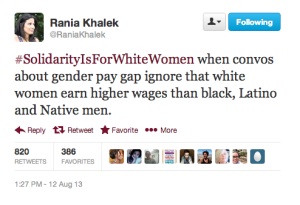 Alon and Haberfeld’s (2007) study of work history data reveals “constant racial and ethnic wage gaps among women with college education and a widening race gap among women with no college degrees.” They continue, “minorities earn less even in comparison to Whites with similar levels of education.” The existence of a racial wage gap is also well established in the literature, as the skills of people of color (even when they are equal to those of white people) are less valued. Broyles and Fenner (2010; see also Fryer et al 2013; Heywood and Parent 2012; Kennedy et al 2009; Kerr and Walsh 2014; Lyons and Pettit 2011; Mason 2011; McGregory 2013; O’Gorman 2010) review the ways that hiring has consistently found evidence of racial discrimination, with studies suggesting white preference rates ranging from 50 to 240 percent higher than for black candidates. On the whole, white people spend less time looking for jobs and less time unemployed, they tend to get more stable jobs, and are offered higher wages. As Dozier (2010) finds examining the period from 1980 to 2002, “Although the transition to an “office economy” rewarded both black and white women with wage gains, white women reaped greater benefits.” And, while women of each racial group in the US are more likely to be poor than men of their same origin, “white women are less likely to be poor than minority-status men” (Elmelech and Lu 2004). Similar inequalities are found between white and Latina women (Carrillo Hemmeter 2008; Flippen 2014; Rodriguez and Devadoss 2014).
Alon and Haberfeld’s (2007) study of work history data reveals “constant racial and ethnic wage gaps among women with college education and a widening race gap among women with no college degrees.” They continue, “minorities earn less even in comparison to Whites with similar levels of education.” The existence of a racial wage gap is also well established in the literature, as the skills of people of color (even when they are equal to those of white people) are less valued. Broyles and Fenner (2010; see also Fryer et al 2013; Heywood and Parent 2012; Kennedy et al 2009; Kerr and Walsh 2014; Lyons and Pettit 2011; Mason 2011; McGregory 2013; O’Gorman 2010) review the ways that hiring has consistently found evidence of racial discrimination, with studies suggesting white preference rates ranging from 50 to 240 percent higher than for black candidates. On the whole, white people spend less time looking for jobs and less time unemployed, they tend to get more stable jobs, and are offered higher wages. As Dozier (2010) finds examining the period from 1980 to 2002, “Although the transition to an “office economy” rewarded both black and white women with wage gains, white women reaped greater benefits.” And, while women of each racial group in the US are more likely to be poor than men of their same origin, “white women are less likely to be poor than minority-status men” (Elmelech and Lu 2004). Similar inequalities are found between white and Latina women (Carrillo Hemmeter 2008; Flippen 2014; Rodriguez and Devadoss 2014).
Further, just as feminism is a transnational movement, so too is the gender wage gap also a transnational issue. Gender wage gaps are documented in Portugal (Bastos et al 2009), Korea (Cho 2007), Honduras (Hoyos et al 2012), Czech Republic (Ioakimidis 2012), Vietnam (Liu 2004), Greece (Livanos and Pouliakas 2012), South Korea (Monk-Turner and Turner 2004), Belarus (Pastore and Verashchagina 2005), Pakistan (Sabir and Aftab 2007), the UK (Schulze 2015), across the European Union (Christofides at al 2013), as well as in other comparative international studies (e.g. Daly et al 2006; Diaz and Sanchez 2013; Machin and Pahani 2003).
The gender wage gap also varies between major metropolitan areas and nonmetropolitan areas, where women suffer more of a gap (Smith and Glauber 2013; Vera-Toscano et al 2004). It varies from state to state. It unevenly impacts people who are gay or lesbian (Douglas and Steinberger 2015; Elmslie and Tebaldi 2014). It impacts non-unionized women of color more than unionized women of color (McGregory 2013). And it varies between high-income men and women and low-income men and women (Kassenboehmer and Sinning 2014; Mishel et al 2014; Shannon 1996).
Therefore, the gender wage gap cannot be understood just through gender. It must be understood and confronted intersectionally with attention to context.
5. You say the wage gap “has been disproved many times before”.
First, you’re overshooting the mark a bit here. Even the sources you yourself cite don’t say the gap has been disproved. They say that it has narrowed, or they question one specific statistic used to measure it (the often-cited 23-cent pay gap figure). As Kunze (2008) describes, “There is no undisputed method for measuring the gender wage gap,” and this leads to different interpretations about it’s size and operation (particularly when it’s examined intersectionally). The consensus (even among those you cite), however, is that it still exists.
Take the Time article by Christina Hoff Sommers that you cite as an example. She is taking issue with the one statistic. She says “the 23-cent gender pay gap is simply the difference between average earnings of all men and women working full-time. It does not account for differences in occupation, positions, education, job tenure or hours worked per week. When such relevant factors are considered, the wage gap narrows to the point of vanishing.” Alright, yes, the 23-cent statistic does not control for all those factors. As I’ve described already, however, this does not make this statistic irrelevant or unimportant, and it reflects the accepted definition of what the wage gap is. Now, her claim that it narrows to the point of vanishing is a bit suspect. First, we again need to be vigilant to the question of which women we are talking about. Feminists do not treat women as a universal block, and the gap is variously narrow or wide depending on who you are referring too. Second, when we take a look at her sources, their “decisiveness” is a bit more muddy than she claims. She refers to the decisive evidence from economists, and she cites one report by CONSAD research corporation to support her claim. Aside from the fact that one study alone isn’t decisive evidence, if you examine their report you’ll find they describe problems of insufficient data and the need for more research on the matter. Moreover, their argument isn’t not even that the wage gap doesn’t exist, it’s that they believe much more of it can be explained by the human capital model of thinking than others acknowledge. The additional two sources Sommers offers as evidence that the wage gap has been debunked are both articles that she herself wrote, which again rely largely on the same CONSAD study. She also claims that the AAUW has debunked the gender wage gap, which if you actually read any of the AAUW reports is plainly false. In fact, their extensive studies (1, 2) reveals quite the opposite.
Needless to say, your claim that the wage gap has been debunked many times before has a handful of problems: 1) it relies on a warped definition of what the pay gap actually is, 2) it takes arguments about the relative role of human capital and extends them in ways that the original researchers are not actually advocating, 3) it over-extends an explanation of the factors shaping of one statistic to claim that the wage gap doesn’t exist at all, and 4) it relies on a small sample of research and characterizes it as decisive, despite those authors own acknowledgement of the incompleteness of their data and findings.
6. You say feminists argue that women aren’t welcome in higher paying STEM fields when women are in fact favored two-to-one in them.
A couple points in reply to this.
- The all three (1, 2, 3) of the sources you cite for this claim are in reference of the exact same study by Williams and Ceci, so this isn’t exactly overwhelming evidence. Particularly since one of the articles you offer also quotes other well-established scholars describing reasons to be suspicious of their methods and findings. This should make us at least be cautious about their finding, and necessitates that we temper claims about the decisiveness of their research.
- As many other researchers have argued, you cannot extrapolate what happens in one field to assume this is the case in all fields. Williams and Ceci’s claim that their study on STEM indicates that “anti-female bias in academic hiring has ended” is frankly academically irresponsible. They step back on this claim a little in a follow up question when they clarify that they aren’t saying women don’t face discrimination, and they agree the paper doesn’t demonstrate that the problem is solved.
- The calls in the article to focus on things beyond overt discrimination are actually quite in line with feminist efforts to increase women’s representation in STEM—for example, by getting girls interested in science at a younger age, challenging ideas that science is masculine, etc.
- Williams and Ceci’s claim in their abstract that the under-representation of women is typically attributed to sexist hiring is just not true. Sexist hiring is just one among many things it is attributed to, including gendered pipelines towards certain disciplines that start at young ages, perceptions/realities of institutional cultures, etc. Feminists argue that gendered outcomes often have gendered origins, even if overt sexist discrimination is not the cause.
7. You point to one incident with Sarah Silverman to characterize all feminists as dishonest.
 Look, I don’t know what was up with the Sarah Silverman situation. Maybe she was being manipulative and dishonest, maybe she didn’t remember the incident well, maybe there was a miscommunication between her and the club manager about what she would be getting paid. I don’t know. The point is, even is she was being totally dishonest, it is wholly unfair to use that as evidence that feminists at large are desperately conspiring to make up wage gaps “to keep their narrative going”. There is plenty of evidence that wage gaps persist, particularly if you look at them intersectionally. Using one person’s dishonestly to justify dismissing all claims is ridiculous.
Look, I don’t know what was up with the Sarah Silverman situation. Maybe she was being manipulative and dishonest, maybe she didn’t remember the incident well, maybe there was a miscommunication between her and the club manager about what she would be getting paid. I don’t know. The point is, even is she was being totally dishonest, it is wholly unfair to use that as evidence that feminists at large are desperately conspiring to make up wage gaps “to keep their narrative going”. There is plenty of evidence that wage gaps persist, particularly if you look at them intersectionally. Using one person’s dishonestly to justify dismissing all claims is ridiculous.
8. You ask why feminists keep talking about this “invisible problem” “instead of dealing with some of the real problems that both genders face.”
First, I hope I’ve addressed enough by now the ways that wage gaps persist as a problem. Second, I’m glad you’re acknowledging here that there are real problems facing women too, in contrast to your earlier statement that First and Second Wave feminism had already solved everything for women. Finally, the question of “why wage gaps” and not other issues is actually totally in line with my own concern and the concern of other feminists about the focus on the issue, particularly when you consider how work on the gender wage gap has tended to unevenly benefit white women. Feminists who focus largely on the wage gap, while ignoring systemic issue of racial inequality, poverty, and imperialism, for example, need to think more critically, and this is where I want to turn to a discussion about white privilege and liberal feminism in relation to wage battles…
The white privilege of liberal feminism
It’s interesting that you took from my earlier article that I was deeply invested in the debate about the wage gap, particularly after I said in the announcement of this discussion that I would rather talk about the current situation of police violence than the wage gap. I mean, by now it should be obvious that I do believe gender wage gaps exist and matter. However, most efforts to address the wage gap have unevenly helped white women, as they have been the primary beneficiaries of increased access to higher education and higher salaries. As bell hooks writes, the reality is “that privileged white women often experience a greater sense of solidarity with men of their same class than with poor white women or women of color.” In this regard, giving some women more access to higher wages doesn’t do much to challenge the broader social and economic structures that produce so much inequality for so many people. In other words, it leaves structural racism and poverty unchallenged.
The issue of the wage gap is a good marker of the difference between liberal feminism and radical feminism. The word “liberal” here is not in reference to the common dichotomy of liberal versus conservative. Liberal feminists focus on how women can gain equality through existing structures of liberal democracy and market capitalism. Key liberal feminist goals would be to gain equal political representation (without challenging the existing political system), or equal pay (without challenging the existing economic system). While being a prominent form of feminist scholarship and activism, liberal feminism is often critiqued by feminists of color, postcolonial feminists, and socialist/Marxist feminists (among others) for its individualism and its failure to challenge existing societal structures that produce inequality (of which the law and the economy are at the forefront). Thus, feminists debate extensively about whether equality can be created through liberal feminism, and the issue of women’s equal membership in an unequal economic system is a prime example.
 In her discussion of Sheryl Sandberg’s best-selling book Lean In, feminist icon bell hooks describes the issue far more eloquently than I could, so I’m going to quote her heavily here. In Lean In, Sandberg describes how women can climb the corporate ladder and gain leadership if they just have the courage to ‘lean in’ and persevere. In a sense, Sandberg is making an argument similar to the one you made, Lauren, (although she does call herself a feminist), that if women just play by the gendered rules of masculinity, they could overcome inequality. Here, hooks’ concerns about Sandburg’s message could be also be offered as a reply to your message about choice and the wage gap: “It almost seems as if Sandburg sees women’s lack of perseverance as more the problem than systemic inequality. Sandburg effectively uses her race and class power and privilege to
In her discussion of Sheryl Sandberg’s best-selling book Lean In, feminist icon bell hooks describes the issue far more eloquently than I could, so I’m going to quote her heavily here. In Lean In, Sandberg describes how women can climb the corporate ladder and gain leadership if they just have the courage to ‘lean in’ and persevere. In a sense, Sandberg is making an argument similar to the one you made, Lauren, (although she does call herself a feminist), that if women just play by the gendered rules of masculinity, they could overcome inequality. Here, hooks’ concerns about Sandburg’s message could be also be offered as a reply to your message about choice and the wage gap: “It almost seems as if Sandburg sees women’s lack of perseverance as more the problem than systemic inequality. Sandburg effectively uses her race and class power and privilege to 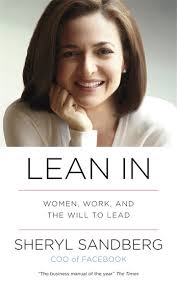 promote a narrow definition of feminism that obscures and undermines visionary feminist concerns.” Thus, uncritical narratives of “choice” and “meritocracy” erase the undergirding structures that shape the landscape within which one is able to “choose.” In other words, the narrative about the choice to lean in erases how these structures are distinctly raced, classed, gendered, euro-centric, and heteronormative. “To women of color young and old, along with anti-racist white women, it is more than obvious that without a call to challenge and change racism as an integral part of class mobility she is really investing in top level success for highly educated women from privileged classes.” (As another example, we saw concern about this emerge in response to Patricia Arquette’s recent Oscar acceptance speech where she called for gay people and people of color to support women’s efforts for equal pay. Here is a good elaboration of the white privilege that her statement reflected. She got some deserved flack from anti-racist feminists on this.)
promote a narrow definition of feminism that obscures and undermines visionary feminist concerns.” Thus, uncritical narratives of “choice” and “meritocracy” erase the undergirding structures that shape the landscape within which one is able to “choose.” In other words, the narrative about the choice to lean in erases how these structures are distinctly raced, classed, gendered, euro-centric, and heteronormative. “To women of color young and old, along with anti-racist white women, it is more than obvious that without a call to challenge and change racism as an integral part of class mobility she is really investing in top level success for highly educated women from privileged classes.” (As another example, we saw concern about this emerge in response to Patricia Arquette’s recent Oscar acceptance speech where she called for gay people and people of color to support women’s efforts for equal pay. Here is a good elaboration of the white privilege that her statement reflected. She got some deserved flack from anti-racist feminists on this.)
As hooks describes, feminism does not begin and end with the notion that it’s all about gender equality within the existing social system. I’ll conclude with her words:
“Importantly, whether feminist or not, we all need to remember that visionary feminist goal which is not of a woman running the world as it is, but a woman doing [her] part to change the world so that freedom and justice, the opportunity to have optimal well-being, can be equally shared by everyone—female and male.”
The end.
My prompt for you, Lauren
I think that I’ve written enough in this essay for you to reply without me posing a new question. So, in order to keep the conversation manageable, I’ll leave it open for you to respond however you want. Feel free to follow up on things I’ve said here, or pose new topics for discussion. As you may have gathered by my slow reply, the time commitment of writing these replies had ended up being more than I anticipated. With that in mind, I propose that we keep the conversation going, but allow it to happen at its own pace. What do you say?
All the best,
Jenna
References:
Aizer, A. (2010). The Gender Wage Gap and Domestic Violence. American Economic Reivew. 100: 1847-1859.
Alon, S. and Y. Haberfeld. (2007). Labor Force Attachment and the Evolving Wage Gap Between White, Black, and Hispanic Young Women. Work and Occupation. 34(4): 369-398.
Bastos, A., S.F. Casaca, F. Nunes, J. Pereirinha. (2009). Women and poverty: A gender-sensitive approach. The Journal of Socio-Economics. 38: 764-778.
Briggs, A.L. (2011). The Wage Gap Revisited: An Investigation of Salary Request Differences Among Black-White and Male-Female Workers. Dissertation. DePaul University.
Broyles, P. and W. Fenner. (2010). Race, human capital, and wage discrimination in STEM professions in the United States. International Journal of Sociology. 30(5/6): 251-266.
Budig, M.J. and P. England. (2001). The Wage Penalty for Motherhood. American Sociological Review. 66(2): 204-225.
Campbell, C. and J. Pearlman. (2013). Period effects, cohort effects, and the narrowing gender wage gap. Social Science Research. 42: 1693-1711.
Carrillo Hemmeter, M.S. (2008). Hispanic-White Women’s Wage Differentials. Dissertation. University of California-Davis.
Cech, E. (2013). Ideological Wage Inequalities?: The Technical/Social Dualism and the Gender Wage Gap in Engineering. Social Forces. 91(4): 1147-1182.
Chappel, M. (2012). Reagan’s “Gender Gap” Strategy and the Limitations of Free-Market Feminism. Journal of Policy History. 24(1): 115-134.
Cho, D. (2007). Why is the gender earnings gap greater in Korea than in the United States? Journal of Japanese International Economics. 21: 455-469.
Christofides, L.N., A. Polycarpou, K. Vrachimis. (2013). Labour Economics. 21: 86-102.
Daczo, Z. (2012). Wage inequality and the gender wage gap: are American women swimming upstream? Dissertation.
Daly, A., A. Kawaguchi, X. Meng, and K. Mumford. (2006). The Gender Wage Gap in Four Countries. The Economic Record. 82(257): 165-176.
Day, C. (2012). Economic Growth, Gender Wage Gap and Fertility Rebound. The Economic Record. 88: 88-99.
Diaz, M.A. and R. Sanchez. (2013). Young workers, marital status and wage gap. Revista de Economia Aplicada. 61: 57-70.
Douglas, J.H. and M.D. Steinberger. (2015). The Sexual Orientation Wage Gap for Racial Minorities. Industrial Relations. 54(1): 50-108.
Dozier, R. (2010). Accumulating Disadvantage: The Growth in the Black-White Wage Gap Among Women. Journal of African American Studies. 14: 279-301.
Edwards, R., D. Evans, and A. Smith. (2006). Wage Negotiations in the Asia Pacific: Does Globalization Increase the Wage Gap? Asia Pacific Business Review. 12(1): 95-108.
Elmelech, Y. and H. Lu. (2004). Race, ethnicity, and the gender poverty gap. Social Science Research. 33: 158-182.
Elmslie, B. and E. Tebaldi. (2014). The Wage Gap against Gay Men: The Leveling of the Playing Field. KYKLOS. 67(3): 330-345.
Fisher, J.D. and C.A. Houseworth. (2012). The reverse wage gap among education White and Black women. Journal of Economic Inequality. 10: 449-470.
Flippen, C.A. (2014). Intersectionality at Work: Determinants of Labor Supply among Immigrant Latinas. Gender & Society. 28(3): 404-434.
Fong, C. (2009). The Nonprofit Wage Differential. Thesis, Georgetown Public Policy Institute.
Franks, T. (2007). Gender and the Wage Gap: Still not equal. Thesis. Wichita State University.
Fryer, R.G., D. Pager, and J.L. Spenkuch. (2013). Racial Disparities in Job Findings and Offered Wages. Journal of Law and Economics. 56(3): 633-689.
Glauber, R. (2008). Race and Gender in Families and at Work: The Fatherhood Wage Premium. Gender and Society. 22(1): 8-30.
Heywood, J.S. and D. Parent. (2012). Performance Pay and the White-Black Wage Gap. Journal of Labor Economics. 30(2): 249-290.
Hirsch, B.T. (2008). 2007 Presidential Address: Wage Gaps Large and Small. Southern Economic Journal. 74(4): 915-933.
Hoyos, R.E., M. Bussolo, and O. Nunez. (2012). Exports, Gender Wage Gaps, and Poverty in Honduras. Oxford Development Studies. 40(4): 533-551.
Hum, D. and W. Simpson. (2000). Closing the Wage Gap: Economic Assimilation of Canadian Immigrants Reconsidered. PCeril. 1(4): 427-441.
Ioakimidis, M. (2012). Gender wage gap and earnings: Predicted by tenure in the Czech Republic. The Journal of Developing Areas. 46(1): 31-43.
Kantola, J. and J. Squires. (2012). From state feminism to market feminism? International Political Science Review. 33(4): 382-400.
Kassenboehmer, S.C. and M.G. Sinning. (2014). Distributional Changes in the Gender Wage Gap. ILR Review. 67(2): 335-
Kemeny, T. and M. Storper. (2012). The sources of urban development: wages, housing, and amenity gaps across American cities. Journal of Regional Science. 52(1): 85-108.
Kennedy, A., E. Nagata, B. Mushenski, and K. Johnson. (2009). Wage Discrimination Based on Gender and Race. The Delta Kappa Gamma Bulletin.
Kerr, C. and R. Walsh. (2014). Racial Wage Disparity in US Cities. Race Soc Probl. 6: 305-327.
Kim, M. (2013). Policies to End the Gender Wage Gap in the United States. Review of Radical Political Economics. 45(3): 278-283.
Kunze, A. (2008). Gender wage gap studies: consistency and decomposition. Empirical Economics. 35: 63-76.
Kunze, A. (2005). The evolution of the gender wage gap. Labour Economics. 12: 73-97.
Levine, L. (2004). The Gender Wage Gap and Pay Equity: Is Comparable Worth the Next Step? Library of Congress.
Liu, A.Y. (2004). Sectoral Gender Wage Gap in Vietnam. Oxford Development Studies. 32(2): 225-239.
Livanos, I. and K. Pouliakas. (2012). Educational segregation and the gender wage gap in Greece. Journal of Economic Studies. 39(5): 554-575.
Lyons, C.J. and B. Pettit. (2011). Compounded Disadvantage: Race, Incarceration, and Wage Growth. Social Pr361.oblems. 58(2): 257-280.
Machin, S. and P.A. Puhani. (2003). Subject of degree and the gender wage differential: evidence from the UK and Germany. Economic Letters. 79: 393-400.
Mangino, W. (2010). Race to College: The “Reverse Gap”. Race Soc Probl. 2: 164-178.
Mason, P.L. (2011). Moments of Disparate Peaks: Race-Gender Wage Gaps Among Mature Persons, 1965-2007. Review of Black Political Economy. 38:1-25.
Maume, D.J. and L. Ruppanner. (2015). State liberalism, female supervisors, and the gender wage gap. Social Science Research. 50: 126-138.
Feminist Discussion Post 1: Feminism, the devaluation of the feminine, and men
(This post is the first in a week long discussion between Lauren and I about feminism. The discussion emerged after Lauren posted a video about why she is not a feminist, to which I wrote an open letter to Lauren in response. Lauren and I then agreed to take part in this call-and-response style discussion, in which we post questions/prompts for one another to reply to. Lauren will post her response on youtube in a day or so, at which time she will also pose a question to me (which I will reply to on this website). You can learn more about the backstory and format of the discussion here, where I also explain my approach to the discussion.)
Hi Lauren,
It was hard to settle on a single question to start with, but I suppose we have a few rounds of this ahead of us, so here goes.
The question I ended up settling on kind of expands on ideas I wrote about in my original reply to you. I’m hoping that you can engage with some of the feminist ideas about masculinity and femininity that I described in my response, and address why you see these ideas as being oppositional to the project of making men’s lives more livable. Before I get to the ultimate question, however, I want to elaborate a little more on what I mean.
One of the main ideas that I tried to convey in my original post is that feminism helps us understand and confront not only the violences and inequalities facing women, but also the problems facing men. I tried to describe this in terms of the ways that gender norms (which feminists challenge), also work to entrench ideas about what it mean to “be a man”. These ideas contribute to some of the deeply harmful conditions in men’s lives, which you raised in your video. Included among these are the expectation of strength, stoicism, and suppression of emotion, which help shape which labor fields men occupy, how men are often taught to respond to emotional distress, and how society responds to them when they fail to fully embody masculine norms (e.g. by being a victim, by being nurturing, by not being the primary breadwinner, etc).
Perhaps another way that I should have described this, is that feminism doesn’t only challenge the way the misogyny devalues women, it also challenges the way that misogyny devalues that which is deemed feminine. (Here is a great article about this from the perspective of a feminist man). Feminists often address the devaluation of the feminine by critiquing, challenging, and breaking open gendered binaries in order to create new possibilities for being and acting in the world. Here is just one example of this:
- Rational/Emotional: The characterization of women as emotional, and thus irrational, goes back for a long time in history. This discourse has played a role in the medical treatment of women (e.g. the invention of female “hysteria”), the treatment of women in science (see Sandra Harding’s work), the lack of recognition of emotions as a site of knowledge (here you see the operation of another gendered binary: objectivity/subjectivity), the way that women are characterized in the work place and when running for public office (e.g. the focus on whether Hillary’s emotions will make her unfit to lead), the exclusion of women from combat, and more. Many women can attest to the ways their expressions of emotion are used to characterize them as “crazy”, and to dismiss their voices and valid arguments about their worlds. This discourse, which treats emotions as feminine, irrational, and undesirable, also in turn makes emotions something that men are taught to suppress. This disregard for emotion impacts how men are expected to behave, to deal with emotional, psychological and physical injury, to interact with others, and to labor in their jobs. The fact is, however, that men are emotional, men need emotions, and this feminization and devaluation of emotions hurts men.
There are many more of these binaries that feminists challenge, including: man/woman, productive/reproductive, objectivity/subjectivity, rational/emotional, mind/body, public/private, political/personal, culture/nature, active/passive, perpetrator/victim, protector/protected, and global/local. I could elaborate a lot about this, but for the sake of brevity, hopefully you can go back and see where I already allude to these in my previous post (e.g. productive/reproductive in terms of breadwinning and caregiving; feminists challenging victim/perpetrator narratives). If you want, I’d be happy to elaborate more on this in another post.
The point I’m trying to make is that when feminists fight for the revaluation of the feminine and for the breaking down of these binaries, they are also opening up terrain for men to express emotion, to buck norms of masculinity that route them towards harm, to claim a role in childrearing, and to be treated fairly when they are victimized. Even the very binary of male/female can be broken open when we examine (as feminists like Judith Butler do) how the presumably natural characteristics of sex and gender are in fact deeply social, and thus open to change.
So, all this build-up was to set up this related set of questions:
With so many of the harms you point to in your video being fundamentally shaped by the very gendered binaries that feminists challenge, why don’t you see feminism as a project that improves men’s lives? Don’t you agree that a project that challenges the devaluation of femininity would also help to address many of the harms men face? Wouldn’t it be more beneficial to look to feminists as allies rather than opponents?
Now here, I just want to note that the topic of how to be an ally and how to act in solidarity is already really prevalent in feminist activist and scholar communities. The role of white people in on-going Black Lives Matter protests is just one example of the continued need to engage in discussions about solidarity and voice, and feminists (and particularly feminists of color) are active in these debates. Feminists often talk and debate on issues of how to create solidarity across difference and how to hold each other accountable in being better allies. When feminists challenge one another to be better allies, however, it’s usually premised on improving a movement that is already so deeply invested in equality and which already has so many tools to understand and confront the ways that power operates through gender, race, class, and sexuality. In this regard, I’ll agree there is room to talk about improving feminist allyship for men experiencing particular harms (male rape victims being a good example). This is not to say there aren’t feminists doing this work though, because, as I have argued, there are many feminists speaking on issues affecting men. Your assertion that feminists are silent is unfair and inaccurate. There is always room to improve though, and discussion and critique is undoubtedly part of how feminists challenge each other to do so. In fact, talking about this would be deeply in line with existing internal debates about allyship among feminists. In these discussions, feminists may also have some very valid questions about how men’s rights groups act (or don’t act) as allies to them as well, and they might point out the stakes for women when men’s groups dismiss, diminish, deny, and derail real valid struggles to improve women’s lives. So, maybe the real heart of the issue is: How can we improve allyship and build solidarity between feminists and men (who may or may not be feminists themselves)? How can we do this without disregarding or ignoring the real and powerful work feminists are already doing? And, how can we do this without dismissing feminism itself, which (I really hope you see) presents so many tools for addressing the harms done by restrictive gender norms?
I know that’s more than one question, but I hope it makes sense why I place them together. I look forward to hearing your first response.
All the best,
Jenna
ANNOUNCEMENT: An Upcoming Virtual Discussion with Lauren Southern
Hi all,
So, a couple weeks ago, I wrote a blog post in reply to Lauren Southern’s viral video “Why I’m Not a Feminist”. I initially wrote this thinking it would be read by a few feminist friends, and I was shocked (and grateful!) by how widely it ended up getting circulated. To date, it has had over 75,000 views, which is totally wild. Trust me, it is a rare experience as a graduate student to have so many people read and engage with something I’ve written, so thank you. I have loved hearing from many of you in the comments section of the blog, in emails, and on reddit forums. I have also learned a lot from your replies—about cool feminist projects, about concerns and conceptions people have about feminism, and about some of the challenges of communicating feminist ideas to a mass audience. More than anything, I’ve really appreciated how thoughtfully most people have participated in the discussion, including those who thoroughly disagreed with what I was saying.
Anyway, yesterday I head from Lauren via Twitter.
After we discussed it a little bit, we agreed on the following:
We would do a one-week call-and-response style online discussion, in which we’ll post questions/prompts for one another. The person will have a day or two to offer a response and to post a new question/prompt for the other person. Lauren will use youtube for her replies, and I’ll use my blog.
Now, I’ll confess this is a nerve-wracking for me.
My first, and perhaps most obvious, concern is that feminism is such a huge arena of activism, ideas, and scholarship. It’s incredibly heterogeneous, and I certainly do not want to remotely claim that I am an expert on every arena of feminist thought and action. Moreover, I want to be really, really clear that I do not represent all feminists. Feminists debate and critique each other’s work all the time. It’s part of what keeps the movement changing, and part of how we push each other to improve. Given this breadth, when I write my replies, I will undoubtedly need to turn to other feminists to learn about topics I’m less well versed in. On this note, I’m all for crowd sourcing some help, so feminists who are following the discussion should feel free to send me sources that might help me address Lauren’s questions. I’m grateful for whatever insights you can add. You can email them to me at everydaygeopoliticshouston@gmail.com.
My second concern about doing this discussion is that this will be a debate between two white cis-gender women. Within feminist history, there is a long, problematic, and on-going history of white feminists bogarting the mic, speaking for all women, and focusing on liberal feminist projects that tend to benefit largely white women, while neglecting issues of LGBTQ people and people of color. This concern feels particularly ripe at this current moment given the need to maintain support and momentum for movements like Black Lives Matter. This week, I think it is more important to talk about what happened to Rekia Boyd, who was killed by an off-duty cop while walking, unarmed, with her friends, than it is to talk about the wage-gap. The man who killed her was just acquitted by some truly insane courtroom logic, and too-few people are standing up. I hope Lauren and I will be able to talk about these issues in relation to feminism. Given that she’s Canadian, perhaps we could also put #BlackLivesMatter into conversation with #AmINext and the issue of missing and murdered indigenous women in Canada. Anyway, I’ll also do my best to keep these issues (and the voices of queer feminists and women of color) front and center here. I do welcome ideas on ways to improve how I do this though, both in terms of formatting (perhaps a way to include more voices in the reply?) and in terms of the content I write and the questions I pose to Lauren. Again, feel free to reach out to me.
My last concern is that the discussion will turn overly adversarial. Both Lauren and I agree we don’t want this, and we hope that those who join in the conversation will try to be respectful to both of us along the way. These can be complicated and difficult conversations to have, all the more so when they’re done in front of thousands of people. So, let’s all try to keep the conversation going productively. That said, we do hope you join in in, and feel free to share thoughts with us in the comment sections of my blog and her video, on Twitter (although, I myself am less of an active Twitter-user), or via email.
I’ll be posting the first question for Lauren tomorrow. So check back soon!
All the best,
Jenna
A Bibliography of Houston
**Thank you to all you have commented or emailed me with resources, books and articles to add to this list!**
As a number of scholars have noted, there is comparatively less scholarship about the Houston compared to other U.S. cities of its size and significance, particularly when it comes to contemporary research (as I’ve come to see there is quite a wealth of historical work that’s been done). Anyway, given that I’m working on research down here, I’ve been collecting whatever I can find about Houston politics, history, and culture. I wanted to share what I’m finding with you so that others also access all these resources in one spot, and in the hopes that others might be able to add to this list. I’ll try to include a blurb about all of the books (not articles though). Feel free to get in touch with me if you know of other things to add to this list. I’ll treat this as a living document and continue to add things to it, so continue to check back!
Books:
 Bazaldua, M. (2007). Thanks to Prison: Operation State Boots to Gucci Boots. Houston: Maroon Publishing.
Bazaldua, M. (2007). Thanks to Prison: Operation State Boots to Gucci Boots. Houston: Maroon Publishing.
Autobiographical story of Bazaldua, who grew up in Houston, and his experiences in the criminal justice system and beyond.
Beeth, H. and C.D. Wintz. (1992). Black Dixie: Afro-Texan History and Culture in Houston. College Station, TX: Texas A & M University Press.
An innovative contribution to the growing body of research about urban African-American culture in the South, Black Dixie is the first anthology to track the black experience in a single southern city across the entire slavery/post-slavery continuum. It combines the best previously published scholarship about black Houston and little-known contemporary eyewitness accounts of the city with fresh, unpublished essays by historians and social scientists.
Divided into four sections, the book covers a broad range of both time and subjects. The first section analyzes the development of scholarly consciousness and interest in the history of black Houston; slavery in nineteenth-century Houston is covered in the second section; economic and social development in Houston in the era of segregation are looked at in the third section; and segregation, violence, and civil rights in twentieth-century Houston are dealt with in the final section.
Beste, P., L.S. Walker, J. Kugelberg, Bun B. (2013). Houston Rap. New York: Sinecure.
 “The Houston, Texas Neighborhoods of Fifth Ward, Third Ward, and South Park have grown to be hallowed ground for modern rap culture, possessing self-contained celebrities, entrepreneurs, support networks, and a micro-economy of their own…Photographer Peter Beste and writer Lance Scott Walker spent nine years documenting the most influential style in 21st century hip-hop and the vibrant inner city culture from which it stems… Houston Rap, edited by Johan Kugelberg, profiles noted artists such as Bun B of UGK, Z-Ro, Big Mike, K-Rino, Willie D of the Geto Boys, Lil’ Troy, and Paul Wall, alongside reflections of the lives of departed legends such as DJ Screw, Pimp C, and Big Hawk.”
“The Houston, Texas Neighborhoods of Fifth Ward, Third Ward, and South Park have grown to be hallowed ground for modern rap culture, possessing self-contained celebrities, entrepreneurs, support networks, and a micro-economy of their own…Photographer Peter Beste and writer Lance Scott Walker spent nine years documenting the most influential style in 21st century hip-hop and the vibrant inner city culture from which it stems… Houston Rap, edited by Johan Kugelberg, profiles noted artists such as Bun B of UGK, Z-Ro, Big Mike, K-Rino, Willie D of the Geto Boys, Lil’ Troy, and Paul Wall, alongside reflections of the lives of departed legends such as DJ Screw, Pimp C, and Big Hawk.”
 Walker, Lance Scott, Johan Kugelberg, Michael Daley, Peter Beste, and Willie D. (2013). Houston Rap Tapes. Los Angeles, CA: Sinecure Books.
Walker, Lance Scott, Johan Kugelberg, Michael Daley, Peter Beste, and Willie D. (2013). Houston Rap Tapes. Los Angeles, CA: Sinecure Books.
Houston Rap Tapes is the companion to Houston Rap, Peter Beste’s intimate photo book on this important hip hop culture.Houston Rap Tapes complements Beste’s photography with a series of oral histories conducted by writer Lance Scott Walker. The book features exclusive interviews with legendary producers and MCs such as Bun B, Willie D, Paul Wall, Z-Ro, Big Mike, DJ DMD, K-Rino, Salih Williams and Lil’ Troy, alongside stories from old school masters like MC Wickett Crickett and Rick Royal. The life stories of the Houston rap scene are also represented by an assortment of radio and club personalities, impresarios, ex-pimps, former drug dealers and members of the community. Lance Scott Walker and Peter Beste spent nine years documenting the most influential style in twenty-first-century hip hop and the vibrant inner-city culture from which it stems.

Bullard, R. (1987). Invisible Houston: The Black Experience in Boom and Bust. College Station: Texas A&M University Press.
In this book, Robert Bullard, when of the foremost scholars of environmental racism, “systematically explores the demographic, social, economic, and political factors that helped make Houston the “golden buckle” of the Sunbelt. He then chronicles the rise of Houston’s black neighborhoods, the first of these being the settlement of emancipated slaves in Freedmen’s Town, an area which is the site of the present-day Forth Ward. Bullard analyzes the boom era of the 1970s and the dwindling economy and government commitment to affirmative action in the 1980s. Using case studies conducted in Houston’s Third Ward, the city’s most diverse black neighborhood and a microcosm of the larger black Houston community, he presents data on and discusses housing patterns, discrimination, pollution, law enforcement, and leadership, relating these issues to the larger ones of institutional racism, poverty, and politics.” Still so relevant to Houston today.
Center for Land Use Interpretation in Houston. (2009). On the Banks of Bayou City. Blaffer Gallery, Art Museum of the University of Houston.
Since 1994, The Center for Land Use Interpretation (CLUI)–a research organization based in Culver City, California–has studied the U.S. landscape, using multidisciplinary research, information processing and interpretive tools to stimulate thought and discussion around contemporary land-use issues. During a residency at the University of Houston Cynthia Woods Mitchell Center for the Arts, the CLUI established a field station on the banks of the Buffalo Bayou, revealing aspects of the relationship between oil and the landscape in Houston that are often overlooked–even by the city’s residents. The CLUI’s findings are presented in this volume and a concurrent exhibition at the Blaffer Gallery, titled Texas Oil: Landscape of an Industry. The book documents the CLUI’s methodology in a series of interviews and includes a photographic essay on land use in Houston featuring a panoramic, foldout section and a comprehensive chronology of the CLUI’s projects and publications over the past 14 years.
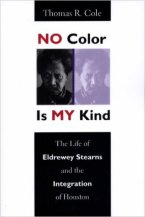 Cole, Thomas R. (1997). No Color Is My Kind: The Life of Eldrewey Stearns and the Integration of Houston. Austin, TX: University of Texas Press.
Cole, Thomas R. (1997). No Color Is My Kind: The Life of Eldrewey Stearns and the Integration of Houston. Austin, TX: University of Texas Press.
“No Color Is My Kind is an uncommon chronicle of identity, fate, and compassion as two men—one Jewish and one African American—set out to rediscover a life lost to manic depression and alcoholism. In 1984, Thomas Cole discovered Eldrewey Stearns in a Galveston psychiatric hospital. Stearns, a fifty-two-year-old black man, complained that although he felt very important, no one understood him. Over the course of the next decade, Cole and Stearns, in a tumultuous and often painful collaboration, recovered Stearns’ life before his slide into madness—as a young boy in Galveston and San Augustine and as a civil rights leader and lawyer who sparked Houston’s desegregation movement between 1959 and 1963.
While other southern cities rocked with violence, Houston integrated its public accommodations peacefully. In these pages appear figures such as Thurgood Marshall, Martin Luther King, Jr., Leon Jaworski, and Dan Rather, all of whom—along with Stearns—maneuvered and conspired to integrate the city quickly and calmly. Weaving the tragic story of a charismatic and deeply troubled leader into the record of a major historic event, Cole also explores his emotionally charged collaboration with Stearns. Their poignant relationship sheds powerful and healing light on contemporary race relations in America, and especially on issues of power, authority, and mental illness.
 De León, Arnoldo (2001). Ethnicity in the Sunbelt: Mexican Americans in Houston. Houston, Texas: University of Houston, Center for Mexican American Studies.
De León, Arnoldo (2001). Ethnicity in the Sunbelt: Mexican Americans in Houston. Houston, Texas: University of Houston, Center for Mexican American Studies.
A century after the first wave of Hispanic settlement in Houston, the city has come to be known as the “Hispanic mecca of Texas.” Arnoldo De León’s classic study of Hispanic Houston, now updated to cover recent developments and encompass a decade of additional scholarship, showcases the urban experience for Sunbelt Mexican Americans.
De León focuses on the development of the barrios in Texas’ largest city from the 1920s to the present. Following the generational model, he explores issues of acculturation and identity formation across political and social eras. This contribution to community studies, urban history, and ethnic studies was originally published in 1989 by the Center for Mexican American Studies at the University of Houston. With the Center’s cooperation, it is now available again for a new generation of scholars.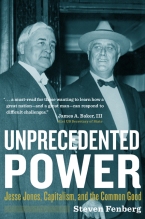
Fenberg, S. (2013). Unprecedented Power: Jesse Jones, Capitalism, and the Common Good. College Station, Texas: Texas A&M University Press.
“Unprecedented Power shows how Jesse Jones and the Reconstruction Finance Corporation restored the economy during the Great Depression, built massive, cutting-edge industries in time for the Allied Forces to fight and win World War II and made money for the federal government at the same time. No wonder Kirkus Reviews said Unprecedented Power “holds enormous relevance today.” Next to President Roosevelt, Jesse Jones was considered to be the most powerful person in the nation throughout the Great Depression and World War II. Largely forgotten today, he helped define Franklin Roosevelt’s presidency as one that in many instances provided positive, profound and enduring results for the nation in a financially astute and responsible manner. Jesse Jones’s successful efforts and methods to preserve capitalism and democracy during two of the most tumultuous and dangerous periods in United States history deserve attention today. According to author Steven Fenberg, Jones understood he would prosper only if his community thrived, a belief that directed him to combine capitalism and public service to develop his hometown of Houston, to rescue his country and to save nations. As we grapple with the role of government, unemployment, financial insecurity for many, crumbling infrastructure and reliance on other nations for vital resources, Unprecedented Power offers models for today by looking at successes from the past.”
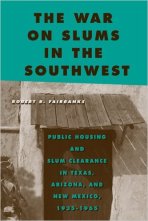
Fairbanks, R.B. (2014). The War on Slums in the Southwest: Public Housing and Slum Clearance in Texas, Arizona, and New Mexico, 1935-1965. Philadelphia, PA: Temple University Press.
In The War on Slums in the Southwest, Robert Fairbanks provides compelling and probing case studies of economic problems and public housing plights in Albuquerque, Dallas, Houston, Phoenix and San Antonio. He provides brief histories of each city–all of which expanded dynamically between 1935 and 1965–and how they responded to slums under the Housing Acts of 1937, 1949, and 1954.
Despite being a region where conservative politics has ruled, these Southwestern cities often handled population growth, urban planning, and economic development in ways that closely followed the national account of efforts to eliminate slums and provide public housing for the needy. The War on Slums in the Southwest therefore corrects some misconceptions about the role of slum clearance and public housing in this region as Fairbanks integrates urban policy into the larger understanding of federal and state-based housing policies.
 Faniel, M.L. (2013). Hip-Hop in Houston: The Origin & The Legacy. Charleston: The History Press.
Faniel, M.L. (2013). Hip-Hop in Houston: The Origin & The Legacy. Charleston: The History Press.
“Rap-A-Lot Records, U.G.K (Pimp C and Bun B), Paul Wall, Beyonce, Chamillionaire and Scarface are all names synonymous with contemporary hip-hop. And they have one thing in common: Houston. Long before the country came to know the chopped and screwed style of rape from the Bayou Country in the late 1990s, hip-hop in Houston grew steadily and produced some of the most prolific independent artists in the industry. With early roots in jazz, blues, R&B and zydeco, Houston hip-hop evolved not only as a musical form but also as a cultural movement. Join Maco L. Faniel as he uncovers the early years of Houston hip-hop from the music to the culture it inspired.”

Feagin, J. (1998). Free Enterprise City. New Brunswick: Rutgers University Press.
“The mission of this book is to attack the idea that Houston is a conservative role model, a city that succeeds due to its boundless devotion to free enterprise….One thing Feagin does right: he points out that Houston is hardly a laissez-faire paradise, in that government has consistently subsidized its business elite through spending on roads, port facilities, convention centers, etc.”
—

Hyonchu Kwon, V. (1997). Entrepreneurship and Religion: Korean Immigrants in Houston, Texas.
Don’t know too much about this one…
Check back…Or better yet, maybe one of you can fill this in…
—
—
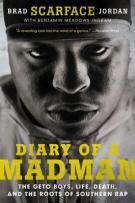 Jordan, Brad “Scarface” and Benjamin Meadows Ingram. (2015). Diary of a Madman: The Geto Boys, Life, Death, and the Roots of Southern Rap. New York: Harper Collins.
Jordan, Brad “Scarface” and Benjamin Meadows Ingram. (2015). Diary of a Madman: The Geto Boys, Life, Death, and the Roots of Southern Rap. New York: Harper Collins.
From Geto Boys legend and renowned storyteller Scarface, comes a passionate memoir about how hip-hop changed the life of a kid from the south side of Houston, and how he rose to the top-and ushered in a new generation of rap dominance. Scarface is the celebrated rapper whose hits include “On My Block,” “Mind Playing Tricks on Me” and “Damn It Feels Good to be a Gangsta” (made famous in the cult film Office Space). The former president of Def Jam South, he’s collaborated with everyone from Kanye West, Ice Cube and Nas, and had many solo hits such as “Guess Who’s Back” feat. Jay-Z and “Smile” feat. Tupac. But before that, he was a kid from Houston in love with rock-and-roll, listening to AC/DC and KISS.
In Diary of a Madman, Scarface shares how his world changed when he heard Run DMC for the first time; how he dropped out of school in the ninth grade and started selling crack; and how he began rapping as the new form of music made its way out of New York and across the country. It is the account of his rise to the heights of the rap world, as well as his battles with his own demons and depression. Passionately exploring and explaining the roots and influences of rap culture, Diary of a Madman is the story of hip-hop-the music, the business, the streets, and life on the south side Houston, Texas.
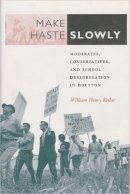 Kellar, William Henry. (1999). Make Haste Slowly: Moderates, Conservatives, and School Desegregation in Houston, Texas. College Station: Texas A&M University Press.
Kellar, William Henry. (1999). Make Haste Slowly: Moderates, Conservatives, and School Desegregation in Houston, Texas. College Station: Texas A&M University Press.
“In Make Haste Slowly, William Henry Kellar provides the first extensive examination of the development of Houston’s racially segregated public school system, the long fight for school desegregation, and the roles played by various community groups, including the HISD Board of Education, in one of the most significant stories of the civil rights era…Kellar shows that, while Houston desegregated its public school system peacefully, the limited integration that originally occurred served only to delay equal access to HISD schools. Houstonians shifted from a strategy “massive resistance” to one of “massive retreat.” White flight and resegregation transformed both the community and its public schools…Kellar concludes that forty years after the Brown decision, many of the aspirations that landmark ruling inspired have proven elusive, but the impact of the ruling on Houston has changed the face of that city and the nature of its public education dramatically and in unanticipated ways.”
Marquez, J.D. (2013). Black-Brown Solidarity: Racial Politics in the New Gulf South.Austin: University of Texas Press.
“Houston is the largest city in the Gulf South, a region sometimes referred to as the “black belt” because of its sizeable African American population. Yet, over the last thirty years, Latinos have become the largest ethnic minority in Houston, which is surpassed only by Los Angeles and New York in the number of Latino residents. Examining the history and effects of this phenomenon, Black-Brown Solidarity describes the outcomes of unexpected coalitions that have formed between the rapidly growing Latino populations and the long-held black enclaves in the region.
Together, minority residents have put the spotlight on prominent Old South issues such as racial profiling and police brutality. Expressions of solidarity, John D. Márquez argues, have manifested themselves in expressive forms such as hip-hop music, youth gang cultural traits, and the storytelling of ordinary residents in working-class communities. Contrary to a growing discourse regarding black-brown conflict across the United States, the blurring of racial boundaries reflects broader arguments regarding hybrid cultures that unsettle the orders established by centuries-old colonial formations. Accentuating what the author defines as a racial state of expendability—the lynchpin of vigilante violence and police brutality—the new hybridization has resulted in shared wariness of a linked fate.Black-Brown Solidarity also explores the ways in which the significance of African American history in the South has influenced the structures through which Latinos have endured and responded to expendability. Mining data from historical archives, oral histories, legal documents, popular media, and other sources, this work is a major contribution to urban studies, ethnic studies, and critical race theory.”
McComb, D.G. (1981). Houston: A History. Austin: University of Texas Press.
A bit old now, this is the second edition in which McComb examines “Houston politics, its economic and business growth, and the evolution of its social and cultural institutions. New Material traces the role of blacks, Hispanics, and women in the development of the nation’s fifth-largest city. The author offers insights into the character of Houstonians and evaluates the sources of Houston’s wealth, power, and vitality which contribute to its ongoing urban renaissance–that rare moment in human history when the forces of urban life coincide to produce greatness.”
—
Miller, Monica R., Anthony B. Pinn, and Bernard ‘Bun B’ Freeman. (Eds). (2015). Religion in Hip Hop Mapping the New Terrain. London: Bloomsbury Academic.
This edited volume “provides an important step in advancing and mapping this new field of Religion and Hip Hop Studies. The volume features 14 original contributions representative of this new terrain within three sections representing major thematic issues over the past two decades. The Preface is written by one of the most prolific and founding scholars of this area of study, Michael Eric Dyson, and the inclusion of and collaboration with Bernard ‘Bun B’ Freeman fosters a perspective internal to Hip Hop and encourages conversation between artists and academics.”
Some chapters focus specifically on Houston, such as Maco Faniel’s chapter “Mapping Space and Place in the Analysis of Hip Hop and Religion: Houston As An Example”.
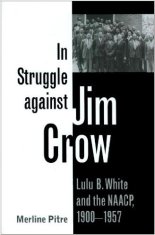 Pitre, M. (1999). In Struggle against Jim Crow: Lulu B. White and the NAACP, 1900-1957. College Station, TX: Texas A&M University Press.
Pitre, M. (1999). In Struggle against Jim Crow: Lulu B. White and the NAACP, 1900-1957. College Station, TX: Texas A&M University Press.
African American women have played significant roles in the ongoing struggle for freedom and equality, but relatively little is known about many of these leaders and activists. Most accounts of the civil rights movement focus on male leaders and the organizations they led, leaving a dearth of information about the countless black women who were the backbone of the struggle in local communities across the country. At the local level women helped mold and shape the direction the movement would take. Lulu B. White was one of those women in the civil rights movement in Texas.
Executive secretary of the Houston branch of the NAACP and state director of branches, White was a significant force in the struggle against Jim Crow during the 1940s and 1950s. She was at the helm of the Houston chapter when the Supreme Court struck down the white primary in Smith v. Allbright, and she led the fight to get more blacks elected to public office, to gain economic parity for African Americans, and to integrate the University of Texas. Author Merline Pitre places White in her proper perspective in Texas, Southern, African American, women’s, and general American history; points to White’s successes and achievements, as well as the problems and conflicts she faced in efforts to eradicate segregation; and looks at the strategies and techniques White used in her leadership roles. Pitre effectively places White within the context of twentieth-century Houston and the civil rights movement that was gripping the state. In Struggle Against Jim Crow is pertinent to the understanding of race, gender, interest group politics, and social reform during this turbulent era.
 Pratt, Joseph: (Multiple published works)
Pratt, Joseph: (Multiple published works)
Pratt is a recently retired historian from the University of Houston. He has written multiple books that focus primarily on energy history and the history of the Houston region:
“The most recent of these are Voice of the Marketplace (2002), a history of the National Petroleum Council, and Prelude to Merger (2000), a history of the Amoco Corporation from 1973-1998. Other oil and gas related books include Offshore Pioneers (1997), a history of the offshore construction work of Brown & Root, From Texas to the East (1993), a strategic history of Texas Eastern Corporation, and The Growth of a Refining Region (1980), an overview of the impact of the refining industry on the Texas-Louisiana Gulf coast. I have also written histories of several other Houston-area organizations (Texas Commerce banks and Baker & Botts law firm), a history of Consolidated Edison of New York City, a dual biography of Houston businessmen Herman and George R. Brown (Builders), and a general history of U.S. business and public policy (The Rise of the Corporate Commonwealth). Click here for the Japanese version.
My current research is on the history of the offshore petroleum industry.”
—
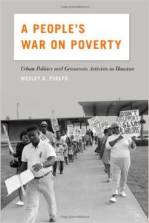 Phelps, W. G. (2014). A People’s War on Poverty: Urban Politics and Grassroots Activists in Houston. Athens: University of Georgia Press.
Phelps, W. G. (2014). A People’s War on Poverty: Urban Politics and Grassroots Activists in Houston. Athens: University of Georgia Press.
“In A People’s War on Poverty, Wesley G. Phelps investigates the on-the-ground implementation of President Lyndon Johnson’s War on Poverty during the 1960s and 1970s. He argues that the fluid interaction between federal policies, urban politics, and grassroots activists created a significant site of conflict over the meaning of American democracy and the rights of citizenship that historians have largely overlooked. In Houston in particular, the War on Poverty spawned fierce political battles that revealed fundamental disagreements over what democracy meant, how far it should extend, and who should benefit from it. Many of the program’s implementers took seriously the federal mandate to empower the poor as they pushed for a more participatory form of democracy that would include more citizens in the political, cultural, and economic life of the city.
At the center of this book are the vitally important but virtually forgotten grassroots activists who administered federal War on Poverty programs, including church ministers, federal program volunteers, students, local administrators, civil rights activists, and the poor themselves. The moderate Great Society liberalism that motivated the architects of the federal programs certainly galvanized local antipoverty activists in Houston. However, their antipoverty philosophy was driven further by prophetic religious traditions and visions of participatory democracy and community organizing championed by the New Left and iconoclastic figures like Saul Alinsky. By focusing on these local actors, Phelps shows that grassroots activists in Houston were influenced by a much more diverse set of intellectual and political traditions, fueling their efforts to expand the meaning of democracy. Ultimately, this episode in Houston’s history reveals both the possibilities and the limits of urban democracy in the twentieth century.”
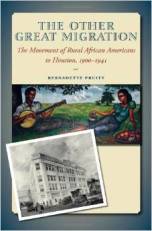 Pruitt, B. (2013). The Other Great Migration: The Movement of Rural African Americans to Houston, 1900-1941.
Pruitt, B. (2013). The Other Great Migration: The Movement of Rural African Americans to Houston, 1900-1941.
“The twentieth century has seen two great waves of African American migration from rural areas into the city, changing not only the country’s demographics but also black culture. In her thorough study of migration to Houston, Bernadette Pruitt portrays the move from rural to urban homes in Jim Crow Houston as a form of black activism and resistance to racism.
Between 1900 and 1950 nearly fifty thousand blacks left their rural communities and small towns in Texas and Louisiana for Houston. Jim Crow proscription, disfranchisement, acts of violence and brutality, and rural poverty pushed them from their homes; the lure of social advancement and prosperity based on urban-industrial development drew them. Houston’s close proximity to basic minerals, innovations in transportation, increased trade, augmented economic revenue, and industrial development prompted white families, commercial businesses, and industries near the Houston Ship Channel to recruit blacks and other immigrants to the city as domestic laborers and wage earners.
Using census data, manuscript collections, government records, and oral history interviews, Pruitt details who the migrants were, why they embarked on their journeys to Houston, the migration networks on which they relied, the jobs they held, the neighborhoods into which they settled, the culture and institutions they transplanted into the city, and the communities and people they transformed in Houston.”
Roth, M. and T. Kennedy. (2012). Houston Blue: The Story of the Houston Police Department. Denton, TX: University of North Texas Press.
“Houston Blue offers the first comprehensive history of one of the nation’s largest police forces, the Houston Police Department. Through extensive archival research and more than one hundred interviews with prominent Houston police figures, politicians, news reporters, attorneys, and others, authors Mitchel P. Roth and Tom Kennedy chronicle the development of policing in the Bayou City from its days as a grimy trading post in the 1830s to its current status as the nation’s fourth largest city. Combining the skills of historian, criminologist, and journalist, Roth and Kennedy reconstruct the history of a police force that has been both innovative and controversial.”
San Miguel, G. (2001). Brown, Not White: School Integration and the Chicano Movement in Houston. College Station: Texas A&M University Press.
“Strikes, boycotts, rallies, negotiations, and litigation marked the efforts of Mexican-origin community members to achieve educational opportunity and oppose discrimination in Houston schools in the early 1970s. These responses were sparked by the effort of the Houston Independent School District to circumvent a court order for desegregation by classifying Mexican American children as “white” and integrating them with African American children—leaving Anglos in segregated schools. Gaining legal recognition for Mexican Americans as a minority group became the only means for fighting this kind of discrimination…The struggle for legal recognition not only reflected an upsurge in organizing within the community but also generated a shift in consciousness and identity. In Brown, Not White Guadalupe San Miguel, Jr., astutely traces the evolution of the community’s political activism in education during the Chicano Movement era of the early 1970s.
San Miguel also identifies the important implications of this struggle for Mexican Americans and for public education. First, he demonstrates, the political mobilization in Houston underscored the emergence of a new type of grassroots ethnic leadership committed to community empowerment and to inclusiveness of diverse ideological interests within the minority community. Second, it signaled a shift in the activist community’s identity from the assimilationist “Mexican American Generation” to the rising Chicano Movement with its “nationalist” ideology. Finally, it introduced Mexican American interests into educational policy making in general and into the national desegregation struggles in particular. This important study will engage those interested in public school policy, as well as scholars of Mexican American history and the history of desegregation in America.”

Scardino, B. W. Stern, B.C. Webb, and P.G. Rowe (Eds). (2003). Ephemeral City: Cite Looks at Houston.
This book has fantastic photos of the city architecture.
“Built around characteristic features of modern life such as rapid change, built-in obsolescence, indeterminacy, media orientation, a culture of style, and instant gratification, Houston is an ephemeral city, hard to pin down and understand. Its lack of zoning (Houston is the only major city in America without it) and a burgeoning population that doubles every generation have created a new urban paradigm, where displacements of traditional patterns of stability and urban ritual are now the norm. Since 1982, “Cite: The Architectural and Design Review of Houston” has explored the nature of Houston’s evolution as an urban place by publishing commissioned articles by nationally known writers and architectural historians and high quality photography. This volume brings together twenty-five exceptional articles from Cite’s first twenty years, along with 224 black-and-white photographs, maps, and plans.The book is divided into three sections: ‘Idea of the City’, edited by Bruce C. Webb, ‘Places of the City’, edited by Barrie Scardino, and ‘Buildings of the City’, edited by William F. Stern. The sections are introduced with new essays written by the editors to provide cohesion for the anthology and commentary on where Houston might be going in the twenty-first century. Most articles are followed by a brief update and bibliography of related articles published in Cite. The editors chose these articles to explore the developmental history and architecture of a flat, sprawling, free-spirited city that is impossible to capture through any one episode or explain through any one place. With a diversity of voices and a selection that includes both narrow and broad topics, the volume constitutes a collage that captures the essence of a remarkable place – inchoate, patchwork, full of youthful vigor, favorable to private enterprise, and one of the world’s most fascinating cities.”
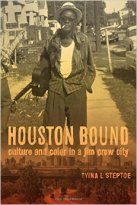
Steptoe, T.L. (2016). Houston Bound: Culture and Color in a Jim Crow City. Berkeley, CA: University of California Press.
Beginning after World War I, Houston was transformed from a black-and-white frontier town into one of the most ethnically and racially diverse urban areas in the United States. Houston Bound draws on social and cultural history to show how, despite Anglo attempts to fix racial categories through Jim Crow laws, converging migrations—particularly those of Mexicans and Creoles—complicated ideas of blackness and whiteness and introduced different understandings about race. This migration history also uses music and sound to examine these racial complexities, tracing the emergence of Houston’s blues and jazz scenes in the 1920s as well as the hybrid forms of these genres that arose when migrants forged shared social space and carved out new communities and politics. This interdisciplinary book provides both an innovative historiography about migration and immigration in the twentieth century and a critical examination of a city located in the former Confederacy.
Thesis, D. (2011). Literary Houston. TCU Press.
“The fifth in the “Literary Cities” series, Literary Houston gathers together historical and contemporary writing about this Texas city that everyone loves to hate. Rather than organize the pieces chronologically, Editor David Theis has assembled works according to themes such as biography and memoir; visitors; the city itself; events; poetry; and fiction. From Cabeza de Vaca’s early experiences to the Enron debacle, Theis presents Houston in a new, critical light.”
—-
Valenzuela, A. (1999). Substractive Schooling: U.S.-Mexican Youth and the Politics of Caring. Albany: SUNY University Press.
A canonical book in education: “Subtractive Schooling provides a framework for understanding the patterns of immigrant achievement and U.S.-born underachievement frequently noted in the literature and observed by the author in her ethnographic account of regular-track youth attending a comprehensive, virtually all-Mexican, inner-city high school in Houston. Valenzuela argues that schools subtract resources from youth in two major ways: firstly by dismissing their definition of education and secondly, through assimilationist policies and practices that minimize their culture and language. A key consequence is the erosion of students’ social capital evident in the absence of academically-oriented networks among acculturated, U.S.-born youth.”
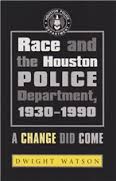
Watson, D. (2005). Race and the Houston Police Department, 1930-1990: A Change Did Come. College Station: Texas A&M University Press.
“Dwight Watson traces how the Houston Police Department reacted to social, political, and institutional change over a fifty-year period—and specifically, how it responded to and in turn influenced racial change. Using police records as well as contemporary accounts, Watson astutely analyzes the escalating strains between the police and segments of the city’s black population in the 1967 police riot at Texas Southern University and the 1971 violence that became known as the Dowling Street Shoot-Out. The police reacted to these events and to daily challenges by hardening its resolve to impose its will on the minority community. Watson’s study demonstrates vividly how race complicated the internal impulses for change and gave way through time to external pressures—including the Civil Rights Movement, modernization, annexations, and court-ordered redistricting—for institutional changes within the department. His work illuminates not only the role of a southern police department in racial change but also the internal dynamics of change in an organization designed to protect the status quo.”
 Wood, R. and J. Fraher (2003). Down in Houston: Bayou City Blues. Austin: University of Texas Press.
Wood, R. and J. Fraher (2003). Down in Houston: Bayou City Blues. Austin: University of Texas Press.
“In the clubs, ballrooms, and barbecue joints of neighborhoods such as Third Ward, Frenchtown, Sunnyside, and Double Bayou, Houston’s African American community birthed a vibrant and unique slice of the blues. Ranging from the down-home sounds of Lightnin’ Hopkins to the more refined orchestrations of the Duke-Peacock recording empire and beyond, Houston blues was and is the voice of a working-class community, an ongoing conversation about good times and hard times, smokin’ Saturday nights and Blue Mondays. Since 1995, Roger Wood and James Fraher have been gathering the story of the blues in Houston. In this book, they draw on dozens of interviews with blues musicians, club owners, audience members, and music producers, as well as dramatic black-and-white photographs of performers and venues, to present a lovingly detailed portrait of the Houston blues scene, past and present. Going back to the early days with Lightnin’ Hopkins, they follow the blues from the streets of Houston’s third and fifth wards to its impact on the wider American blues scene. Along the way, they remember the vigorous blues community that sprang up after World War II, mourn its decline in the Civil Rights era, and celebrate the lively, if sometimes overlooked, blues culture that still calls Houston home. Wood and Fraher conclude the book with an unforgettable reunion of Houston blues legends that they held on January 3, 1998.”
 Writers’ Program of the Work Projects Administration in the State of Texas. (1942). Houston: A History and Guide.
Writers’ Program of the Work Projects Administration in the State of Texas. (1942). Houston: A History and Guide.
An older history of Houston from the WPA. Available for free online here. Referred to me by Jim Parsons in the comment section, who wrote: “A favorite Houston book of mine is “Houston: A Complete History,” the 1942 WPA guide to the city. It is definitely a period piece in some ways, but as a readable history of the city and a snapshot of life at a particular time, it’s fantastic. Even better, it’s available for free online.”
—
—-
Graphic Novels:
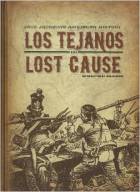 Jack Jackson’s American History: Los Tejanos and Lost Cause
Jack Jackson’s American History: Los Tejanos and Lost Cause
“Los Tejanos is the story of the Texas-Mexican conflict between 1835 and 1875 as seen through the eyes of tejano (literally Texan of Mexican, as distinct from anglo, heritage) Juan Seguín. It is through Seguín, a pivotal and tragic figure, that Jackson humanizes Texas’ fight for independence and provides a human scale for this vast and complex story. Lost Cause documents the violent reaction to Reconstruction by Texans. As Jackson wrote, “Texas reaped a bitter harvest from the War Between the States. Part of this dark legacy was the great unrest that plagued the beaten but unbowed populace.” The tensions caused by Reconstruction are told through the Taylor-Sutton feud, which raged across South Texas, embracing two generations and causing untold grief, and the gunslinger John Wesley Hardin, who swept across Texas killing Carpetbaggers, Federal soldiers, and Indians. Jackson’s work is as known for its rigorous research — he became as good an historian as he was a cartoonist — as well as its chiseled, raw-boned visual approach, reproducing the time and place with an uncanny verisimilitude. This edition includes an essay by and interview with Jackson about the controversy Lost Cause generated, and an introduction by the novelist Ron Hansen.”

Long, M., J. Demonakos, N. Powell. (2012). The Silence of Our Friends. New York: First Second.
“As the civil rights struggle heats up in Texas, two [Houston] families-one white, one black-find common ground. This semi-autobiographical tale is set in 1967 Texas, against the backdrop of the fight for civil rights. A white family from a notoriously racist neighborhood in the suburbs and a black family from its poorest ward cross Houston’s color line, overcoming humiliation, degradation, and violence to win the freedom of five black college students unjustly charged with the murder of a policeman. The Silence of Our Friends follows events through the point of view of young Mark Long, whose father is a reporter covering the story. Semi-fictionalized, this story has its roots solidly in very real events. With art from the brilliant Nate Powell (Swallow Me Whole) bringing the tale to heart-wrenching life,The Silence of Our Friends is a new and important entry in the body of civil rights literature.
Videos:
Vice TV’s “Screwed in Houston” focuses on the city’s hip hop culture. (Part 1 below, other parts also available on Youtube though.)
Frontline’s “Dropout Nation” offers a portrait of Sharpstown High School students, the problem with dropout, and the work of educators to try and help them graduate. Trailer below, but you can watch the full documentary and access their extra resources about it here.
Houston “Waterfront City”: Pretty standard Discovery Channel documentary about the city
“Third Ward Texas”… Documentary about Project Row Houses (Trailer Below, Learn more here)
Drugs Inc “High in Houston” (National Geographic Program about Drugs in the Fifth Ward)
“This is Our Home and It Is Not For Sale”(1987, Directed by Jon Schwartz) “This Is Our Home, It Is Not For Sale is the 60-year history of an archetypal American neighborhood, Riverside in Houston, Texas, which experienced the classic syndrome of integration, real estate blockbusting, white flight, and regentrification common to virtually every American city.
The film’s title comes from that era of racial transition when whites, pressed by real estate agents to sell to blacks, prominently displayed signs proclaiming: “This Is Our Home, It Is Not For Sale”–words that would be swallowed in almost every case as white owners stampeded and property values collapsed. Years later, that dictum remained just as timely and relevant to Riverside’s affluent black community as they continued to protest various social and institutional encroachments into the area.”
Berman, David, Thomas R Cole, and California Newsreel (Film). The Strange Demise of Jim Crow How Houston Desegregated Its Public Accommodations, 1959-1963. San Francisco, CA: California Newsreel, 1997.
Houston-based Resources and Archives:
African-American Library at the Gregory School: “The African American Library at the Gregory School officially opened its doors on Saturday, November 14, 2009. Located in the historic Freeman’s Town at 1300 Victor St., Houston, TX 77019, the library is housed in the Edgar M. Gregory School, which served as the first public school for African Americans in Houston. The first library of its kind in Houston and one of the few African American libraries in the country, the Gregory School serves as a resource to preserve, promote, and celebrate the rich history and culture of African Americans in Houston, the surrounding region, and the African Diaspora. This historic building was reconditioned to serve as a repository for use by historians, researchers, and general public. The African American Library at the Gregory School is the newest of three special collections operated by the Houston Public library. The library provides incomparable collections of multi-type resources including reference books, rare books, archival materials, exhibits, artifacts, oral histories, and innovative programs. With community participation, this facility is expected to become one-of-a-kind research and cultural center, providing valuable information to the Houston community and the entire world.”
Houston History (Journal): The Center of Public History program at University of Houston also has a journal on Houston History that has published a lot of work on Houston. In fact they have just celebrated their 30th anniversary.
Houston Public Library-Downtown: The Public Library has a significant archive of Houston materials.
Hip Hop Collections (University of Houston Library): The Houston Hip Hop collections document the unique music and culture of Houston hip hop. Among their riches are approximately 1500 vinyl records owned by DJ Screw, originator of the “chopped and screwed” genre, as well as related photographs and artifacts. Other materials include lyrics and photographs of the rapper HAWK, audio and promotional materials from other Houston artists, and the creative products of Pen & Pixel Graphics, Inc. and Samplified Digital Recording Studios.
Center for Public History (UH): As a commenter alerted me, the Center did a lot of oral histories of movers and shakers in Houston before they died. The should be archived at the University of Houston library.
Texas Southern University Library: TSU’s library should also have archival material about Houston’s black community.
Smith, C. S. Race Riot, Houston, Texas, August 23, 1917. [Detroit, Mich.]: [Smith], 1917.: My sense is that this is a personal blog, but it has a useful list of resources about race riots in 1917.
—–
Academic Journal Articles:
**(if you don’t have access to academic journals, feel free to get in touch with me and I will try to share a copy of the article when possible)
Baker, Andrew C. (July 2014). From Rural South to Metropolitan Sunbelt: Creating a Cowboy Identity in the Shadow of Houston. Southwestern Historical Quarterly. 118 (1): 1–22.
Banta, R.Mm, C.J. Senff, J. Nielsen-Gammon, L.S. Darby, T.B. Ryerson, R.J. Alvarez, S.P. Sandberg, E.J. Williams, and M. Trainer. (2005). A Bad Air Day In Houston: A case study from the Texas Air Quality Study 2000 field campaign in Houston illustrates the role of small-scale meteorological processes in producing high-pollution events.
Bell, D.C., JW. Carlson, and A.J. Richard. (1998). The Social Ecology of Drug Use: A Factor Analysis of an Urban Environment. 33(11): 2201-2217.
Block, Robinson. (2010). Afro-Americans for Black Liberation and the Fight for Civil Rights at the University of Houston. Houston History. 8(1): 24–28.
Bright, S.B. (YEAR). The Failure to Achieve Fairness: Race and Poverty Continue to Influence Who Dies. Journal of Constitutional Law.11(1): 23-38).
Bullard, R. (2007). Solid Waste Sites and the Black Houston Community. Sociological Inquiry. 53(2-3): 273-288.
Bullard, R. (1991). Housing problems and prospects for blacks in Houston. The Review of Black Political Economy. 19(3-4): 175-194.
Bush, W.S. (2004). (DISSERTATION). Representing the Juvenile Delinquent: Reform, Social Science, and Teenage Troubles in Postwar Texas.
Calbillo, Carlos. (2011). The Chicano Movement in Houston and Texas: A Personal Memory.” Houston History. 9(1): 25–29.
Calhoun, Claudia. (2015). Where Houston Met Hollywood: Giant, Glenn McCarthy, and the Construction of a Modern City. Journal of Urban History. 41(3): 404–19.
Cano, G. (2004). The Virgin, the Priest, and the Flag: Political Mobilization of Mexican Immigrants in Chicago, Houston, and New York.
Carrasco, C.L. (2003). (MASTERS THESIS) Urban Ethnic Mosaics: An Analysis of Community Perspectives in Third Ward, Houston, Texas.
Cepeda, A., A. Valdez, C. Kaplan, and L. Hill. (2010). Patterns of Substance use among Hurrican Katrina evacuees in Houston, Texas. Disasters. 34(2): 426-446.
Derossett, D.L. (2014). Free markets and foreclosures: An examination of contradictions in neoliberal urbanization in Houston, Texas. Cities.
Esparza, Jesus Jesse. ( 2011). La Colonia Mexicana: A History of Mexican Americans in Houston. Houston History. 9(1): 2–8.
Feagin, J.R. (2009). The secondary circuit of capital: office construction in Houston, Texas. International Journal of Urban and Regional Research. 11(2): 172-192.
Feagin, J.R. (2009). The secondary circuit of capital: office construction in Houston, Texas. International Journal of Urban and Regional Research. 11(2): 172-192.
Feagin, J.R. (1984). The role of the state in urban development: the case of Houston, Texas. Environment and Planning D: Society and Space. 2(4): 447-460.
Fifer McIntosh, M. (2008). Measuring the Labor Market Impacts of Hurricane Katrina Migration: Evidence from Houston, Texas. The American Economic Review. 98(2): 54-57.
Fisher, R. (1989). Urban Policy in Houston, Texas. Urban Studies. 26: 144-154.
Frey, W.H. and K. Liaw. (1998). Immigrant Concentration and Domestic Migrant Dispersal: Is Movement to Nonmetropolitan Areas “White Flight”? Professional Geographer.50(2): 215-232.
Garrison Marks, John. (2014). Community Bonds in the Bayou City: Free Blacks and Local Reputation in Early Houston. Southwestern Historical Quarterly. 117(3): 266–82.
Henthorn, T. C. (2015). Building a Moral Metropolis: Philanthropy and City Building in Houston, Texas. Journal of Urban History.
Holmes, A. and J.F. James. (1995). Discrimination, Lending Practices and Housing Values: Preliminary Evidence from the Houston Market. The Journal of Real Estate Research.
Jackson, Chuck. “What Blooms: The Jailhouse, Inside Out,” in Studies in Law, Politics, and Society (Spec. Issue on The Beautiful Prison). Ed. Austin Sarat. Intro. Doran Larson. 64 (April/May 2014), 87-96.
Jackson, Chuck. “What Looms: The University, the Jailhouse, and Pedagogy,” Pedagogy: Critical Approaches to Teaching Literature, Language, Composition, and Culture, 9.2 (Spring 2009), 315-324.
Kirby, A. and A.K. Lynch. (1987). A ghost in the growth machine: the aftermath of rapid population growth in Houston. Urban Studies.24: 587-596.
Lang, N.G. (1989). AIDS, gays and the ballot box: The politics of disease in Houston, Texas. Medical Anthropology: Cross-Cultural Studies in Health and Illness. 10(2-3): 203-209.
La Vigne, N., L.E. Brooks, T.L. Shollenberger. (2009). Women on the Outside: Understanding the Experiences of Female Prisoners Returning to Houston, Texas. Urban Institute Justice Policy Center.
Lee, E. B., L. A. Browne, and J.W. Ward. Local Newspapers and the Houston Public School Desegregation, 1954-1984. S.l.: s.n.] ;, 2010.
Lin, J. (2005). Ethnic places, postmodernism, and urban change in Houston. The Sociological Quarterly.36(4): 629-647.
Longoria, R. and S. Rogers. (2013). Exodus within an expanding city: The case of Houston’s historic African-American communities. Urban Design International.18: 24-42.
Malone, C.K. (2007). Unannounced and Unexpected: The Desegregation of Houston Public Library in the Early 1950s. Library Trends. 55(3): 665-674.
Marquez, J.D. (1011). The browning of Black politics: Foundational Blackness and new Latino subjectivities. Subjectivity.4: 47-67.
McDavid, C. (2011). When is “Gone” Gone? Archaeology, Gentrification, and Competing Narratives about Freedman’s Town, Houston. Historical Archaeologies of Poverty.45(3): 74-88.
McDavid, C. (2006). The Power of a Name: Reclaiming Heritage in Freedmen’s Town, Houston, Texas. African Diaspora Archaeology Newsletter.9(1).
McDavid, C., D. Bruner, and R. Marcom. (2008). Urban Archeology and the Pressures of Gentrification: Claiming, Naming, and Negotiating “Freedom” in Freedmen’s Town, Houston. Bulletin of the Texas Archeological Society.79: 37-52.
McNeil, L. and A. Valenzuela. The Harmful Impact of the TAAS System of Testing in Texas: Beneath the Accountability Rhetoric.
McWhorter, T. (2011). Trailblazers in Houston’s East End: The Impact of Ripley House and the Settlement Association on Houston’s Hispanic Population. Houston History. 9(1): 9-13.
McWhorter, T. (2010). From Das Zweiter to El Segundo: A Brief History of Houston’s Second Ward. Houston History. 8(1): 38-42.
Mieszkowski, P. and B. Smith. (1991). Analyzing urban decentralization: The case of Houston. Regional Science and Urban Economic. 21(2): 183-199.
Montz, Z.A. (2013). (DISSERTATION). “Negro Laborers to the Crossroads:” Organized Labor and the Traditions of Black Unionism in Houston, Texas, 1935-1964.
Nicholson-Preuss, M.L. (2010). (DISSERTATION). Down and Out in Old J D: Urban Public Hospitals, Institutional Stigma and Medical Indigence in the Twentieth Century. (Focused on indigent healthcare and public hospitals in Houston, specifically Jefferson Davis Hospital and the controversies surrounding its funding. There is a hard copy at the Metropolitan Research Center at the Houston Library and its available from the University of Houston via ProQuest.
Norris, D. (2009-2010). Houston Gentrification: Options for Current Residents of Third Ward. T. Marshall L. Review.
Oliver Rogers, G. and S. SukoIratanametee. (2009). Neighborhood design and sense of community: Comparing suburban neighborhoods in Houston Texas. Landscape and Urban Planning. 92: 325-334.
Olson, F. (THESIS). Social Constructionism in Community Development in the Spring Branch, Memorial Community of Houston, Texas.
Pando, P. (Summer 2011). When There Were Wards: A Series IN THE NICKEL, HOUSTON’S FIFTH WARD.” Houston History 8, no. 3 (Summer 2011): 33–37.
Pegoda, A. J. (2010). The University of Houston and Texas Southern University: Perpetuating ‘Separate but Equal’ in the Face of Brown v. Board of Education. Houston History. 8(1): 19-23.
Peiser, R.B. (2003). Land Development Regulation: A Case Study of Dallas and Houston, Texas. Real Estate Economics. 9(4): 397-417.
Pit, C. (2011). (DISSERTATION). Deal with us: The business of Mexican culture in post-World-War II Houston.
Pitre, M. “Texas and the Master Civil Rights Narrative: A Case Study of Black Females in Houston.” Southwestern Historical Quarterly, no. 116 (October 2012): 124–37.
Podagrosi, A. (YEAR). Gentrification and the Influence of Local Government in the Physical and Social Upgrading of Houston.
Podagrosi, A., I. Vojnovic, and B. Pigozzi. (2011). The diversity of gentrification in Houston’s urban renaissance: from cleansing the urban poor to supergentrification. Environment and Planning A. 43: 1910-1929.
Podagrosi, A. and I. Vojnovic. (2008). Tearing Down Freeman’s Town and African American Displacement in Houston: The Good, the Bad, and the Ugly of Urban Revival. Urban Geography.29(4): 371-401.
Pruitt, B. (1991). The Urban Transformation of the MacGregor Area in Houston, Texas, 1950-70.
Qian, Z. (2011). Shaping Urban Form without Zoning: Investigating Three Neighbourhoods in Houston. Planning Practice and Research. 26(1): 21-42.
Qian, Z. (2010). Without zoning: Urban development and land use controls in Houston. Cities.27(1): 31-41.
Quraishi, U. (2013). (DISSERTATION). Multiple Mobilities: Race, Capital, and South Asian Migrations to and Through Houston.
Raymond, M., S.H. Fletcher, J. Luque. (2001). Teach for America: An Evaluation of Teacher Differences and Student Outcomes in Houston, Texas.
Rose, L.S., H. Akbrai, and H. Taha. (2003). Characterizing the Fabric of the Urban Environment: A Case Study of Greater Houston, Texas.
Rosin, Jan Swellander. (Fall 2005). “The New Latinos and Houston’s Global Pueblo.” Houston History Magazine. 20.
Ross-Nazzal, J. (2008). The Right Place Houston Makes History. Houston History. 6(1): 4-11.
Selley, M.G. (2011). House Special: Mexican Food & Houston Politics. Houston History. 9(1): 30-35.
Shelton, J.E. and M.N. Coleman. (2009). After the Storm: How Race, Class, and Immigration Concerns Influenced Beliefs About the Katrina Evacuees. Social Science Quarterly.90(3): 480-496.
Shelton, K. (2012). Culture War in Downtown Houston: Jones Hall and the Postwar Battle over Exclusive Space. Southwestern Historical Quarterly. 116(1): 1-24.
Sheridan, J.T. (YEAR). Invisible Houston: Recording Oral Histories with Middle School Students.
SoRelle, J.M. (1980). (DISSERTATION). The darker side of ‘Heaven’: the black community in Houston, Texas, 1917-1945.
Steptoe, Tyina L. (2008). (DISSERTATION). Dixie West: Race, Migration, and the Color Lines in Jim Crow Houston.
Vojnovic, I. (2003). Governance in Houston: Growth Theories and Urban Pressures. Journal of Urban Affairs.25(5): 589-624.
Vu, R. (2013). ‘Natives of a Ghost Country: The Vietnamese in Houston and Their Construction of a Postwar Community’ in J. Desai and K.Y. Joshi (Eds.), Asian Americans in Dixie: Race and Migration in the South. 165-189.
Yandle, T. and D. Burton. (1996). Reexamining Environmental Justice: A Statistical Analysis of Historical Hazardous Waste Landfil Siting Patterns in Metropolitan Texas. Social Science Quarterly. 77(3): 477-492.
—
—
Non-peer reviewed articles that are good/useful (ordered from most recent):
Steptoe, T. (December 14, 2015). ‘Creole’ in Houston: Not Black, Not White, Different than ‘Mixed’. Houston Chronicle.
Swartz, M. (October 2015). Green Acres. Texas Monthly. (Offers a good description of Houston’s “green makeover” and the development of city parks).
Hinchliffe, E. and B. Rogers. (October 8, 2015). Judge orders closure of troubled Crestmont Village apartments. Houston Chronicle.
Lomax, J.N. (October 1, 2015). Houston’s Real Estate Market Feeling the Effects of Oil’s Price Drop. Texas Monthly. (“Don’t be fooled by claims of economic diversification–the city still runs on oil.”)
Holeywell, R. (September 16, 2015). What maps reveal about Houston’s health problems. Urban Edge.
Holeywell, R. (September 11, 2015). Why Residents Have Nuanced Views of Gentrification. Urban Edge.
Holeywell, R. (September 8, 2015). Forget What You’ve Heard, Houston Really Does Have Zoning (Sort Of). The Urban Edge.
Klineberg, S. (August 26, 2015). Four Myths About Katrina’s Impact on Houston. Urban Edge.
Holeywell, R. (August 25, 2015). No, Katrina Evacuees Didn’t Cause a Houston Crime Wave. Urban Edge.
Tatke, S. (August 13, 2015). Carless in Houston. Texas Monthly. (“The heretical choice to not own a vehicle in a city that worships the automobile”.)
Holeywell, R. (July 30, 2015). The troubling ways wealthy parents pick schools. Urban Edge.
Lomax, J.N. (July 27, 2015). From Texas to Cuba: An Epic Road Trip, Castro’s Trip to Houston, and How It’s Changed. Texas Monthly. (“As the doors to Cuban travel slowly re-open, the author’s dad recalls his epic road/cruise ship trip to Havana just before Castro’s take-over, and we remember Castro’s hero’s welcome in Houston a few months later.”)
Graham, D. (July 21, 2015). Sandra Bland and the Long History of Racism in Waller County, Texas. The Atlantic.
Lane, C. (June 29, 2015). Gentrification in Houston: Does it Ruin Neighborhoods? Houston Press.
Shelton, K., K. Douds, and J. Wu. (June 29, 2015). Surveys show Houstonians’ long-running love-hate relationship with transit. Urban Edge.
Cramptom, Liz. (June 25, 2015). “Supreme Court: Texas Reinforced Segregated Housing.” The Texas Tribune.
Llamas, J. (June 25, 2015). A closer look at criticism of Houston’s “transit deserts”. Urban Edge.
Holeywell, R. (June 24, 2015). Houston’s office boom is just about over. Urban Edge.
KTRK. (May 7, 2016). “ABC13 Archive: Newscast from Moody Park Riot of 1978.” ABC13 Houston.
Payne, M. (June 22, 2015). Houston cyclists keep getting killed and they don’t have to. Urban Edge.
Shelton, K. (June 9, 2015). Demand, supply, gap: Transit deserts in Houston. Urban Edge.
Levin, M. (May 1, 2015). Houston is both one of the most diverse and most segregated US cities. Houston Chronicle.
Shelton, K. (March 31, 2015). Should Minority Houstonians be Moving to Newer Suburbs? Urban Edge.
Shelton, K., K. Douds, and J. Wu. (JuThompson, D. (March 26, 2015). Americans Love Big Hot Suburbs. The Atlantic. (Describes population growth in Houston, Austin, Dallas).
O’Connell, H. (March 24, 2015). Connecting Job Proximity and Gentrificaiton: What’s going on Houston? Urban Edge.
Shelton, K. (March 17, 2015). So there’s good news and bad news about income inequality in Houston. Urban Edge.
Lomax, J.N. (March 12, 2015). Three Pies in the Houston Skies. Texas Monthly. (The author discusses why Houston Redditors ideas for changing Houston are cool but unrealistic.)
Solomon, D. (February 25, 2015). Houston and Austin Had Two of the Biggest Rent Hikes in the Past Year of Any City in the Country. Texas Monthly.
Smothers, H. (January 21, 2015). Houston’s Equal Rights Ordinance, Explained. Texas Monthly.
Solomon, D. (July 23, 2014). Do Millennials Prefer Houston and San Antonio to Dallas and Austin? Texas Monthly.
Holeywell, R. (May 13, 2015). HISD opens massive school district data sets to researchers. Urban Edge.
Hlavaty, C. (June 8, 2014). Beltway 8 vs. Huge Land Formations: Mapping Tool Lets You Realize Its Enormity.” Houston Chronicle. Solomon, D. (April 30, 2014). As If You Needed It, Further Proof That Houston Is So Much Bigger Than Most Cities. Texas Monthly. (The article overlays maps of other cities and Houston to compare).
Florida, R. (October, 2013). The Boom Towns and Ghost Towns of the New Economy. The Atlantic. (“New York, Houston, Washington, D.C.–plus college towns and the energy belt–are all up, while much of the Sun Belt is (still) down. Mapping the winners and losers since the crash.”)
Holeywell, R. (October, 2013). Houston: The Surprising Contenter in America’s Urban Revival. Governing. (“Even the country’s most sprawling, least dense, most automobile-dependent city in America is trying to adapt to people’s preference for urban living.”)
Thompson, D. (May 28, 2013). Houston is Unstoppable: Why Texas’ Juggernaut Is America’s #1 Job Creator. The Atlantic.
Swartz, M. (February, 2009). Downsizing Houston. Texas Monthly. (“If the crash that followed the boom hasn’t exactly been our fault, the result has been the same sad sense that maybe we’ll never have fun again.”
Burka, P. (November 16, 2007). The Future of Houston. Texas Monthly. (The article sums up research presented by a sociologist and J.P. Morgan Chase chairman about changes in Houston.)
—
Other Texas Books (Some have sections about Houston specifically):
Clayson, W.S. (2010). Freedom is Not Enough: The War on Poverty and the Civil Rights Movement in Texas. Austin: University of Texas Press.
Cullen, D.O. and K.G. Wilkinson (Eds.). (2010). The Texas Left: The Radical Roots of Lone Star Liberalism. College Station: Texas A&M University Press.
Foley, D., C. Mota, D. Post, and I. Lozano. (1977). From Peones to Politics: Ethnic Relations in a South Texas Town 1900-1977. Austin: University of Texas Center for Mexican American Studies.
Hubner, J. (2005). Last Chance in Texas: The Redemption of Criminal Youth. New York: Random House.
Leon, A. (1999). Mexican Americans in Texas: A Brief History (Second Edition). Wheeling: Harlan Davidson.
Macleish, K.T. (2013). Making War at Fort Hood: Life and Uncertainty in a Military Community. Princeton: Princeton University Press.
Miller, C. and H. Sanders (Eds.). (1990). Urban Texas: Politics and Development. College Station: Texas A&M University Press.
Perkinson, R. (2010). Texas Tough: The Rise of America’s Prison Empire. New York: Metropolitan Books.
Valencia, R. (2008). Chicano Students and the Courts: The Mexican American Legal Struggle for Educational Equality. New York: New York University Press.








































